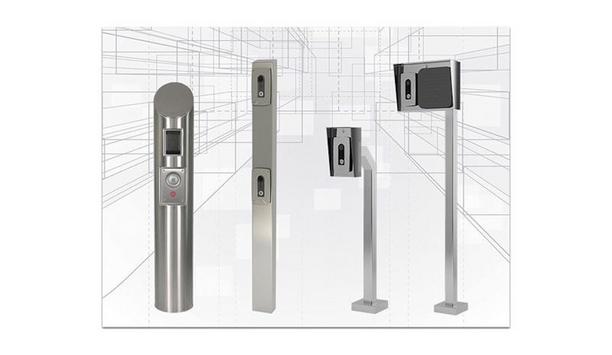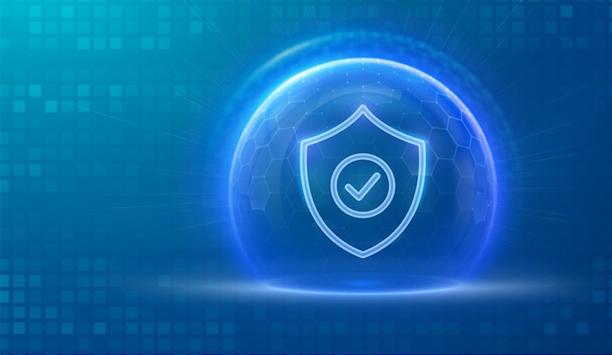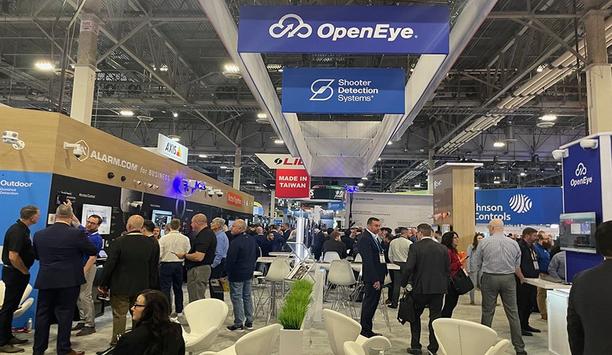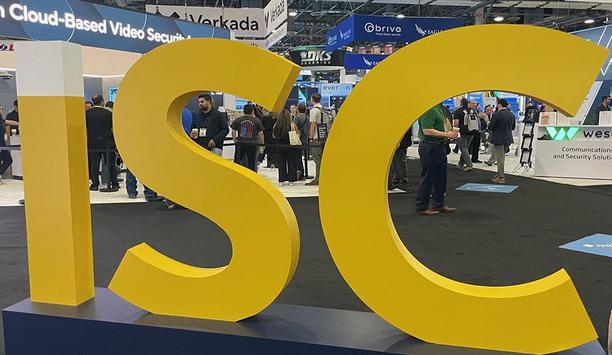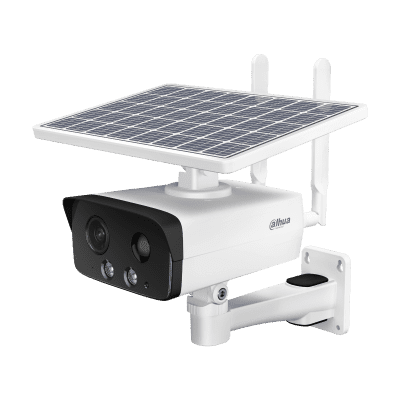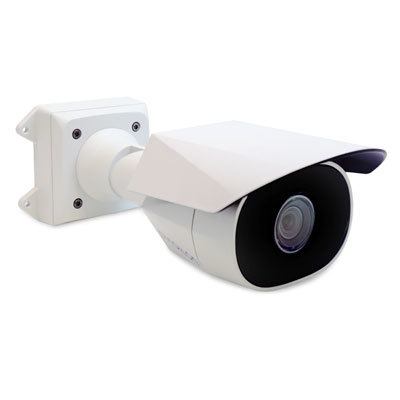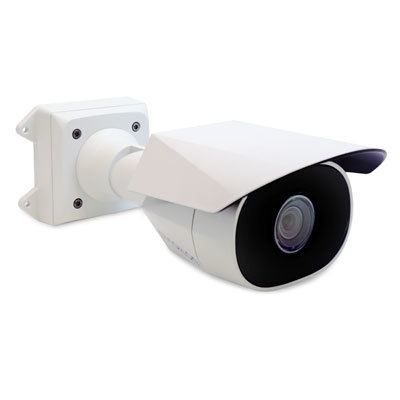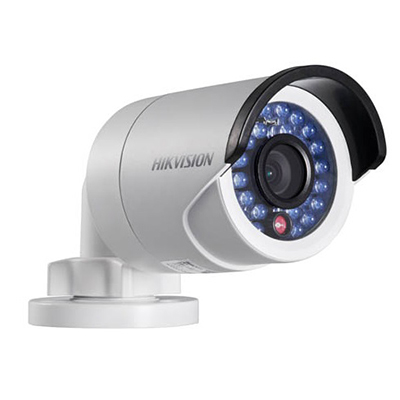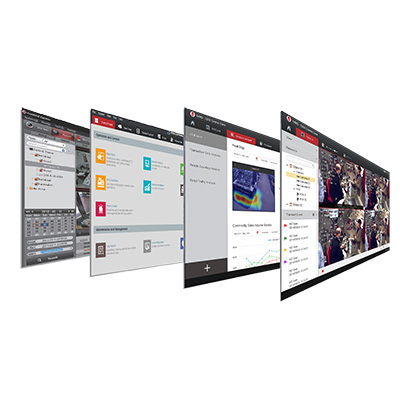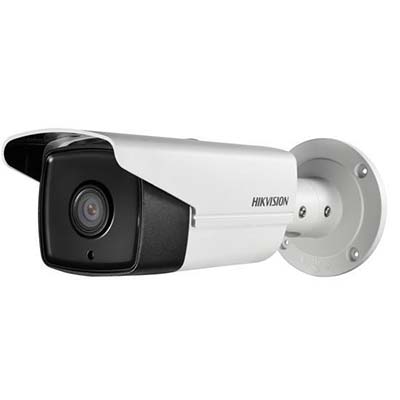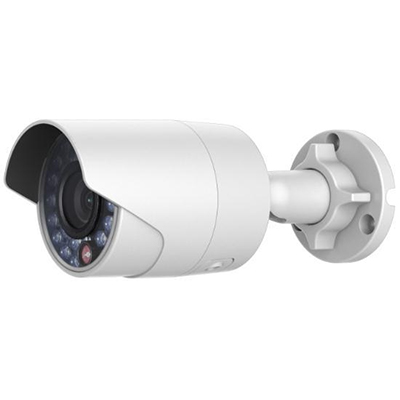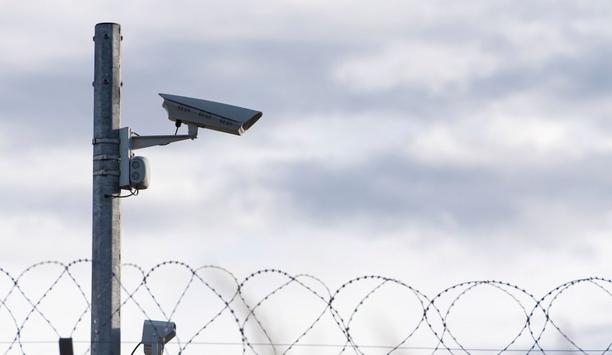Network / IP security
With the recent update of its Document Reader SDK, Regula became the first identity verification (IDV) vendor to make it possible to verify all the dynamic security features of documents in real time. With the latest addition of Dynaprint® checks, the solution ensures more robust physical document authentication during remote onboarding. The innovation has arrived at a time when 58% of businesses globally face fake or modified IDs during digital onboarding. Dynamic se...
Dahua Technology, a world-pioneering video-centric AIoT solution and service provider, proudly released the newest addition to its WizColor product offerings. Equipped with an artillery of intelligent functions tailored to meet the needs of various scenarios, the WizColor technology expands its capabilities with five innovative categories: WizColor + 4K, WizColor + PT, WizColor + Vari-focal, WizColor + HDCVI, and WizColor + 4G. WizColor + 4K: Brilliant nights, clear details The WizColor techn...
Kaseya, the pioneering provider of AI-powered cybersecurity and IT management software, has announced its Spring 2025 release with new features that equips MSPs and internal IT teams with new capabilities to automate workflows, enhance the end-user experience, and strengthen security posture ahead of Kaseya Connect, where the company will debut the latest evolution of Kaseya 365. “Innovation is not just part of our roadmap — it’s embedded in our DNA,” said Jim Lippie, Ch...
Everon, a pioneering security integrator and premier provider of commercial security, video, fire and life safety solutions in the U.S., announced the promotion of Chris Heugle to Senior Vice President, Commercial Sales & Integrated Solutions, and Greg Mastroserio to Vice President, Commercial & Integrated Solutions Sales to lead companywide strategic sales initiatives. With nearly 20 years of industry experience, Heugle will now oversee Everon’s overarching sales strategy, bringi...
The Physical Security Interoperability Alliance (PSIA) hosted a well-attended cocktail reception and live demonstration during ISC West 2025 to unveil its latest advancement: the PKOC 3.0 specification, an exciting solution for secure, open credentialing in physical access control systems. Jason Ouellette, Chairman of the PSIA and Corporate VP of Innovation and Technical Partnerships at ELATEC, led the presentation. He shared an overview of PKOC’s progre...
For all the emphasis on cloud systems and centralised servers at ISC West, a lot of innovation in security video systems is happening at the edge. New advancements inside video cameras are boosting capabilities at the edge, from advancements in processing power to artificial intelligence (AI) and machine learning (ML) algorithms that can now be deployed directly on the cameras or edge devices. Advancements in AI algorithms The progress of video systems becoming smarter at the edge is driven...
News
i-PRO Co., Ltd. (formerly Panasonic Security), a pioneer in professional security and public safety solutions, announces that from October 1, 2025, the Saga Factory (Tosu City, Saga Prefecture, Japan) will be positioned and operated as the core factory, starting with the production of security cameras. They will expand the system to supply high-quality "Made in Japan" products from Japan to the world. Production of security cameras The monthly production volume will start at approximately 14,000 units, and they aim to reach about 40,000 units by FY 2028 by promoting rationalisation and automation. They plan to gradually increase the production of security cameras and implement integrated production from component mounting to assembly and inspection starting in August 2026. Furthermore, they will promote digitalisation to realise operations that deliver products within two weeks of ordering. i-PRO's manufacturing philosophy Plan to slowly increase the exhibit of security cameras and implement integrated production Keizo Yamaguchi, Chief Manufacturing Officer, stated, "In addition to Japan's technological expertise and quality, we will make this a core factory that can compete globally in terms of cost and delivery time." Additionally, Tosu City in Saga Prefecture is geographically convenient for transportation, so they will aim to turn the entire factory into a showroom, inviting customers from Japan and abroad to convey i-PRO's manufacturing philosophy and uniqueness. Assembly production of the security cameras The Saga Factory was established in 1964 as a production base for Kyushu Matsushita Electric Co., Ltd. (currently Panasonic Connect Co., Ltd.), and since 2022, i-PRO has outsourced the assembly production of the security cameras for North America. Last October, when Panasonic Connect announced the closure of the Saga Factory, they continued to consider future production at the factory with CBRE K.K., a pioneering commercial real estate service provider. This time, through a scheme formed by CBRE, they have agreed to sign a lease agreement with "Tosu Industrial Facility LLC (SPC)" by the end of September 2025 and have decided to conduct their own production at the factory.
ASSA ABLOY has acquired Pedestal PRO, a US manufacturer of access control pedestals, bollards, and innovative mounting solutions. "I am very pleased to welcome Pedestal PRO into the ASSA ABLOY Group. This acquisition delivers on our strategy to strengthen our position in mature markets through adding complementary products and solutions to our core business,” says Nico Delvaux, President and CEO of ASSA ABLOY. Pedestal PRO electromechanical solutions "Pedestal PRO is an established innovator that seamlessly integrates design, architectural elements, and access control technology, and I am excited for them to be part of ASSA ABLOY," says Lucas Boselli, Executive Vice President of ASSA ABLOY and Head of the Americas Division. "Their product portfolio enhances our offering for electromechanical solutions and solidifies our position as a go-to partner for access control equipment manufacturers, system integrators, and security professionals." Pedestal PRO in USA Pedestal PRO was founded in 2002 and has some 50 employees. The main office and factory are located in Lindon, Utah, USA. Sales for 2024 amounted to about MUSD 11 (approx. MSEK 120) with a good EBIT margin. The acquisition will be accretive to EPS from the start.
The Monitoring Association (TMA) is pleased to announce David Charney, senior vice president video command centre, Everon, will deliver the keynote address at the 2025 TMA Virtual Mid-Year Meeting on Tuesday, April 29, 2025, at 10:00 AM/ET. His address, titled, 'Inspiring Leadership in a Changing World,' will speak directly to the evolving landscape of leadership in the monitoring industry. The 2025 TMA Virtual Mid-Year Meeting will take place virtually over three days, Tuesday, April 29th-Thursday, May 1st. New video technologies and AI solutions “The monitoring industry is in a transformative phase as new video technologies and AI solutions have emerged and introduced new heights of efficiency and effectiveness,” stated TMA President Steve Butkovich. “We’re grateful to have David to deliver the opening keynote address at this year’s meeting. He is a dynamic, seasoned, and respected pioneer who has successfully navigated change and inspired transformation. His unique insights are certain to inspire our attendees.” How to cultivate a leadership mindset Charney will examine changes in leadership and how to cultivate a leadership mindset that embraces change In his keynote presentation, Charney will examine changes in leadership and how to cultivate a leadership mindset that embraces change and drives innovation. “No matter who you are, what your purpose and your level of comfort, we are all going through change. Perspective matters,” stated David Charney. “My comments will help monitoring professionals navigate through monitoring industry adaptations taking place now and provide key steps for success along the way.” Prior roles of Charney Charney joined Everon in March 2025 after more than 15 years at Stealth Monitoring, where he served in four successive positions, beginning as President in October 2011 and concluding as Chief Customer Officer. Charney was responsible for 17 offices in three countries and more than 1200 employees in his role as Chief Operating Officer at Stealth. An avid public speaker, he speaks to crowds on topics ranging from thought leadership across technical topics to motivational speeches at University Campuses.
Hikvision has achieved two prestigious international certifications: ETSI EN 303 645 and EN 18031. The certifications were awarded by Bureau Veritas, a globally renowned third-party inspection, testing and certification organisation. This achievement underscores Hikvision’s commitment to security and compliance in its IoT products. ETSI EN 303 645 certification ETSI EN 303 645 certification is a European standard focused on the security of IoT devices The ETSI EN 303 645 certification is a European standard focused on the security of consumer IoT devices. Obtaining this certification validates that a company's IoT products meet international standards in terms of privacy protection and data security, demonstrating their capability to create a safer IoT environment for users. EN 18031 certification The EN 18031 certification standard was developed by the Joint Technical Committee CEN-CENELEC JTC 13, Working Group 8 (WG8), which specialises in cybersecurity and data protection. The primary objective of this standard is to strengthen radio equipment's capability to protect security, network, privacy, and financial assets from common cybersecurity threats while mitigating known exploitable vulnerabilities. Hikvision security capabilities Hikvision has partnered with the Secura laboratory to jointly advance international certification In addition, Hikvision has partnered with the Netherlands-based Secura laboratory to jointly advance international certification cooperation related to the standards EN 303 645, EN 18031, and IEC 62443. The collaboration focuses on product security development processes, standardising the security requirements of IoT devices, and ensuring data security in radio equipment. By deepening cooperation in global security standards, Hikvision continues to enhance the security capabilities of its products provide global users with safer and more reliable intelligent security solutions. Smart IoT applications Leveraging its technical expertise and in-depth industry understanding in IoT perception and artificial intelligence, Hikvision has innovatively expanded its smart IoT applications. Multiple cybersecurity technologies developed by Hikvision have earned national-level scientific and technological innovation awards. Looking ahead, Hikvision remains committed to strengthening the construction of the security operations system, ensuring that every link complies with industry security standards, and contributes to the development of a secure ecosystem.
Camden Door Controls has announced a number of enhancements to its popular CX-DE1200 Series EXIT WATCH™ delayed egress magnetic locks. These include a louder 75 dB voice annunciation, packaging the lock with a 90 dB remote sounder, and adding the option for a cost-effective kit that includes the maglock, remote sounder, and a remote reset key switch. Camden EXIT WATCH™ series Camden EXIT WATCH™ series delayed egress magnetic locks feature a 1200 lb. holding force, rugged aluminium construction, voice, and LED count-down annunciation, with anti-tailgating and anti-passback. They are available in single and two-door models that are UL-listed and comply with NFPA, IBC, IFC, UBC, and CPC code requirements.
Hexagon AB announced an agreement to acquire the Unified Communications Radio Suite (UCRS) software assets of CONET Communications GmbH (CCOM), part of CONET Group, to complement its public safety platform. UCRS is a high-performance communication solution for control centres capable of integrating diverse channels such as Private Branch Exchange (PBX) and mobile phone networks, digital radio, business information systems, public address systems, video surveillance (CCTV), video conferencing, and satellite communication infrastructures. Hexagon's public safety platform Successful customers such as the Kassel Fire Brigade already benefit from the combined Hexagon Combining UCRS with Hexagon's public safety platform will provide agencies with a fully integrated command-and-control solution from one vendor. Successful customers such as the Kassel Fire Brigade already benefit from the combined Hexagon and CONET offering. “Seamless communication is an essential part of emergency response. Public safety agencies must be able to communicate with responders in a variety of ways, making the addition of CCOM’s product suite a natural extension of Hexagon’s technology stack,” said Norbert Hanke, interim President and CEO, Hexagon. “This acquisition strengthens our ability to serve public safety customers today while accelerating innovation for the future.” CCOM’s UCRS solution CCOM’s UCRS solution, supported by around 50 employees, will be reported within Hexagon's Safety, Infrastructure & Geospatial division and is expected to generate revenues of around ~10 MEUR in 2025 with margins similar to SIG averages. Completion of the transaction is subject to regulatory approvals and other customary conditions and is expected to be finalised by the end of Q2 2025.
i-PRO Co., Ltd. (formerly Panasonic Security), a pioneer in professional security and public safety solutions, announces that from October 1, 2025, the Saga Factory (Tosu City, Saga Prefecture, Japan) will be positioned and operated as the core factory, starting with the production of security cameras. They will expand the system to supply high-quality "Made in Japan" products from Japan to the world. Production of security cameras The monthly production volume will start at approximately 14,000 units, and they aim to reach about 40,000 units by FY 2028 by promoting rationalisation and automation. They plan to gradually increase the production of security cameras and implement integrated production from component mounting to assembly and inspection starting in August 2026. Furthermore, they will promote digitalisation to realise operations that deliver products within two weeks of ordering. i-PRO's manufacturing philosophy Plan to slowly increase the exhibit of security cameras and implement integrated production Keizo Yamaguchi, Chief Manufacturing Officer, stated, "In addition to Japan's technological expertise and quality, we will make this a core factory that can compete globally in terms of cost and delivery time." Additionally, Tosu City in Saga Prefecture is geographically convenient for transportation, so they will aim to turn the entire factory into a showroom, inviting customers from Japan and abroad to convey i-PRO's manufacturing philosophy and uniqueness. Assembly production of the security cameras The Saga Factory was established in 1964 as a production base for Kyushu Matsushita Electric Co., Ltd. (currently Panasonic Connect Co., Ltd.), and since 2022, i-PRO has outsourced the assembly production of the security cameras for North America. Last October, when Panasonic Connect announced the closure of the Saga Factory, they continued to consider future production at the factory with CBRE K.K., a pioneering commercial real estate service provider. This time, through a scheme formed by CBRE, they have agreed to sign a lease agreement with "Tosu Industrial Facility LLC (SPC)" by the end of September 2025 and have decided to conduct their own production at the factory.
ASSA ABLOY has acquired Pedestal PRO, a US manufacturer of access control pedestals, bollards, and innovative mounting solutions. "I am very pleased to welcome Pedestal PRO into the ASSA ABLOY Group. This acquisition delivers on our strategy to strengthen our position in mature markets through adding complementary products and solutions to our core business,” says Nico Delvaux, President and CEO of ASSA ABLOY. Pedestal PRO electromechanical solutions "Pedestal PRO is an established innovator that seamlessly integrates design, architectural elements, and access control technology, and I am excited for them to be part of ASSA ABLOY," says Lucas Boselli, Executive Vice President of ASSA ABLOY and Head of the Americas Division. "Their product portfolio enhances our offering for electromechanical solutions and solidifies our position as a go-to partner for access control equipment manufacturers, system integrators, and security professionals." Pedestal PRO in USA Pedestal PRO was founded in 2002 and has some 50 employees. The main office and factory are located in Lindon, Utah, USA. Sales for 2024 amounted to about MUSD 11 (approx. MSEK 120) with a good EBIT margin. The acquisition will be accretive to EPS from the start.
The Monitoring Association (TMA) is pleased to announce David Charney, senior vice president video command centre, Everon, will deliver the keynote address at the 2025 TMA Virtual Mid-Year Meeting on Tuesday, April 29, 2025, at 10:00 AM/ET. His address, titled, 'Inspiring Leadership in a Changing World,' will speak directly to the evolving landscape of leadership in the monitoring industry. The 2025 TMA Virtual Mid-Year Meeting will take place virtually over three days, Tuesday, April 29th-Thursday, May 1st. New video technologies and AI solutions “The monitoring industry is in a transformative phase as new video technologies and AI solutions have emerged and introduced new heights of efficiency and effectiveness,” stated TMA President Steve Butkovich. “We’re grateful to have David to deliver the opening keynote address at this year’s meeting. He is a dynamic, seasoned, and respected pioneer who has successfully navigated change and inspired transformation. His unique insights are certain to inspire our attendees.” How to cultivate a leadership mindset Charney will examine changes in leadership and how to cultivate a leadership mindset that embraces change In his keynote presentation, Charney will examine changes in leadership and how to cultivate a leadership mindset that embraces change and drives innovation. “No matter who you are, what your purpose and your level of comfort, we are all going through change. Perspective matters,” stated David Charney. “My comments will help monitoring professionals navigate through monitoring industry adaptations taking place now and provide key steps for success along the way.” Prior roles of Charney Charney joined Everon in March 2025 after more than 15 years at Stealth Monitoring, where he served in four successive positions, beginning as President in October 2011 and concluding as Chief Customer Officer. Charney was responsible for 17 offices in three countries and more than 1200 employees in his role as Chief Operating Officer at Stealth. An avid public speaker, he speaks to crowds on topics ranging from thought leadership across technical topics to motivational speeches at University Campuses.
Hikvision has achieved two prestigious international certifications: ETSI EN 303 645 and EN 18031. The certifications were awarded by Bureau Veritas, a globally renowned third-party inspection, testing and certification organisation. This achievement underscores Hikvision’s commitment to security and compliance in its IoT products. ETSI EN 303 645 certification ETSI EN 303 645 certification is a European standard focused on the security of IoT devices The ETSI EN 303 645 certification is a European standard focused on the security of consumer IoT devices. Obtaining this certification validates that a company's IoT products meet international standards in terms of privacy protection and data security, demonstrating their capability to create a safer IoT environment for users. EN 18031 certification The EN 18031 certification standard was developed by the Joint Technical Committee CEN-CENELEC JTC 13, Working Group 8 (WG8), which specialises in cybersecurity and data protection. The primary objective of this standard is to strengthen radio equipment's capability to protect security, network, privacy, and financial assets from common cybersecurity threats while mitigating known exploitable vulnerabilities. Hikvision security capabilities Hikvision has partnered with the Secura laboratory to jointly advance international certification In addition, Hikvision has partnered with the Netherlands-based Secura laboratory to jointly advance international certification cooperation related to the standards EN 303 645, EN 18031, and IEC 62443. The collaboration focuses on product security development processes, standardising the security requirements of IoT devices, and ensuring data security in radio equipment. By deepening cooperation in global security standards, Hikvision continues to enhance the security capabilities of its products provide global users with safer and more reliable intelligent security solutions. Smart IoT applications Leveraging its technical expertise and in-depth industry understanding in IoT perception and artificial intelligence, Hikvision has innovatively expanded its smart IoT applications. Multiple cybersecurity technologies developed by Hikvision have earned national-level scientific and technological innovation awards. Looking ahead, Hikvision remains committed to strengthening the construction of the security operations system, ensuring that every link complies with industry security standards, and contributes to the development of a secure ecosystem.
Camden Door Controls has announced a number of enhancements to its popular CX-DE1200 Series EXIT WATCH™ delayed egress magnetic locks. These include a louder 75 dB voice annunciation, packaging the lock with a 90 dB remote sounder, and adding the option for a cost-effective kit that includes the maglock, remote sounder, and a remote reset key switch. Camden EXIT WATCH™ series Camden EXIT WATCH™ series delayed egress magnetic locks feature a 1200 lb. holding force, rugged aluminium construction, voice, and LED count-down annunciation, with anti-tailgating and anti-passback. They are available in single and two-door models that are UL-listed and comply with NFPA, IBC, IFC, UBC, and CPC code requirements.
Hexagon AB announced an agreement to acquire the Unified Communications Radio Suite (UCRS) software assets of CONET Communications GmbH (CCOM), part of CONET Group, to complement its public safety platform. UCRS is a high-performance communication solution for control centres capable of integrating diverse channels such as Private Branch Exchange (PBX) and mobile phone networks, digital radio, business information systems, public address systems, video surveillance (CCTV), video conferencing, and satellite communication infrastructures. Hexagon's public safety platform Successful customers such as the Kassel Fire Brigade already benefit from the combined Hexagon Combining UCRS with Hexagon's public safety platform will provide agencies with a fully integrated command-and-control solution from one vendor. Successful customers such as the Kassel Fire Brigade already benefit from the combined Hexagon and CONET offering. “Seamless communication is an essential part of emergency response. Public safety agencies must be able to communicate with responders in a variety of ways, making the addition of CCOM’s product suite a natural extension of Hexagon’s technology stack,” said Norbert Hanke, interim President and CEO, Hexagon. “This acquisition strengthens our ability to serve public safety customers today while accelerating innovation for the future.” CCOM’s UCRS solution CCOM’s UCRS solution, supported by around 50 employees, will be reported within Hexagon's Safety, Infrastructure & Geospatial division and is expected to generate revenues of around ~10 MEUR in 2025 with margins similar to SIG averages. Completion of the transaction is subject to regulatory approvals and other customary conditions and is expected to be finalised by the end of Q2 2025.


Expert commentary
Retailers now often find themself in a precarious situation. Profit margins are being squeezed by widespread shoplifting: The Council on Criminal Justice reports that between the first half of 2023 and the first half of 2024, shoplifting reports increased by 24%. Meanwhile, the strategies used by shops to deal with this situation are alienating consumers and affecting total sales. Andy Jassy, the CEO of Amazon, stated during an earnings call that customers are now purchasing more pharmaceuticals from Amazon in response to other retailers locking their cabinets. Media reports This crisis impacts not only the large chains—more than 7,100 retail stores were closed in the U.S. in 2024, a 69% increase from the previous year—but also small, local businesses, whose profit margins are even narrower. Media reports out of Los Angeles show that small businesses in regions with greater shoplifting rates are more likely to close, and small business owners' job satisfaction and general well-being are negatively impacted by the fear of crime. How to safeguard staff and inventory Unchecked retail theft demoralises staff and makes the store less attractive to customers This is obviously not a sustainable situation. In addition to lowering revenue, unchecked retail theft demoralises staff and makes the store less attractive to customers. Unfortunately, making customers wait in line to enter a store or locking up toothpaste and deodorant only makes the customer relationship worse. Retailers need to figure out how to safeguard staff and inventory without alienating their customer base—and they need to figure it out fast. Advanced video security A new tool has come to the forefront of this fight: advanced video security. Of course, video surveillance has been used in stores for many years. However, the technology currently being used to reduce retail theft is very different from the outdated analog video systems of the past. With features like cloud-based flexibility and AI-enhanced analytics, this new generation of video surveillance systems has all the advantages of modern technological advancements, while also providing businesses with a competitive edge in the fight against retail theft. Security's new AI video standard Workers are constantly rushing from aisle to aisle in an effort to satisfy eager consumers Although the typical chain pharmacy may appear straightforward to the customer, retailers are aware of how intricate these spaces are. Hundreds or even thousands of shoppers may come and go on any given day, with a larger volume during busy seasons like holidays or special promotional events. It's common for shoppers to pick up merchandise and put it down in another part of the store, often far away from its original location. Meanwhile, workers are constantly rushing from aisle to aisle in an effort to satisfy eager consumers, particularly during these busy seasons. How much can recorded videos reveal in a busy Using traditional CCTV, managers and security teams can monitor some of this activity, but their viewpoint of events will always be incomplete. There is a limit to how much recorded videos can reveal in busy, fast-paced customer situations, and even the largest chain stores lack the staff and resources to continuously sort and evaluate all of the data they collect. When more customers are in the store for a special event, there’s also naturally a higher risk of theft. New generation of video security Using machine learning algorithms trained on large amounts of retail-specific data The new generation of video security aims to provide retailers with comprehensive intelligence that covers all aspects of their operations. Using machine learning algorithms trained on large amounts of retail-specific data, they are focused on predictive actions and can recognise problematic behaviour in real time from raw video footage. AI-powered surveillance For example, if someone entered a store with empty bags but bypassed the cashier and started heading to the exit with a full bag, AI could predict a potential theft before it happens. Instead of just recording the theft, security action could be triggered in the moment. AI-powered surveillance is like an all-seeing security officer, quickly analysing the thousands of variables at play and spotting the warning signs of a possible crime before it happens. This is especially crucial during the holidays and busy shopping periods. Security personnel required to monitor cameras Imagine a chain store with 500 locations and 32 cameras each: that’s 1,600 cameras Cameras with AI can also alert human security personnel of events that would have otherwise been missed. Imagine a chain store with 500 locations and 32 cameras each: that’s 1,600 cameras. Now just imagine the number of security personnel required to monitor all of those cameras – when it comes down to it, traditional security is a numbers game. AI is the differentiator here that will allow retailers to win this game. VSaaS: A new tool to Deter Theft The emergence of Video Surveillance as a Service (VSaaS), a surprisingly under-discussed aspect of the broader SaaS revolution, is an important part of video security’s evolution. VSaaS solutions are especially helpful for chains that require a high level of centralisation and coordination across hundreds or even thousands of locations. In addition to offering action alerts at the shop level, VSaaS offers comprehensive security systems accessible from any location. This gives corporate headquarters access to complete, aggregated insights on all aspects of business operations. Identify the best ways to deploy staff Retail operators are constantly in a state of triage, rushing to identify the best ways to deploy staff This is significant in part because of the importance that social engineering and store layout have in preventing theft. Stores are frequently more busy during specific hours than others, and consumers may congregate in particular areas of the store while others are comparatively empty. Retail operators are constantly in a state of triage, rushing to identify the best ways to deploy staff and organise inventory while accounting for all of these variables. Cloud-based VSaaS solutions Cloud-based VSaaS solutions help streamline this process by eliminating uncertainty, highlighting blind spots and bottlenecks, and informing retailers of what truly works. Another regrettable reality is that employees frequently steal from businesses they work at. Here, too, VSaaS solutions—when combined with sophisticated, integrated access controls—are essential. AI analytics technology Implementation and deployment of VSaaS is also easier and less costly than CCTV Implementation and deployment of VSaaS is also easier and less costly than CCTV. When new AI analytic updates become available, the client software and hardware don’t need to be upgraded, and the onsite technology and cameras also don’t need to be replaced. The AI analytics technology is upgraded in the cloud, enabling faster deployment and implementation of new technology. New VSaaS solutions Theft will always occur at some level; it's just a part of doing business. However, the growth in shoplifting that retailers have experienced in recent years is unacceptable, and if these figures keep rising, the consequences will be disastrous. In a time of dire need for retail, new VSaaS solutions have come to the forefront and are already turning the tide.
For businesses today, loss prevention is no longer just about safeguarding inventory from theft. While retail theft makes frequent headlines in the United States, and is indeed the leading cause of shrinkage, The National Retail Foundation (NRF) has reported that process failures, operational inefficiencies and employee theft also drive significant losses. Legacy security systems In 2022, the shrink loss is estimated to be $ 120 billion in the United States, and that’s for retail alone. Industries like hospitality, healthcare, manufacturing, and transportation all face similar challenges even though loss and inefficiency take different forms in each of these fields. As shrinks from theft and operational inefficiency have already put margins of companies under pressure, we are increasingly seeing more businesses demand AI-powered security systems with advanced video analytics, capable of addressing both security and operational inefficiencies that their legacy security systems could not. Understanding the full scope of loss Package theft is a common problem in commercial buildings, with which box detection in mailrooms Starbucks’ recent announcement of reinventing its franchise operation due to faltering sales is a great example of how operational efficiency can take a toll on business revenue. In restaurants or hotels, failing to anticipate customer flow can lead to long wait times or inefficient use of staff, frustrating guests. Take, for example, in hospitals, inefficient patient flow management can lead to overcrowded waiting areas and delays in care, compromising patient health. Similarly, in manufacturing, poorly optimised assembly lines create production bottlenecks, delaying output and raising overhead. Package theft is another common problem in commercial buildings, with which package detection in mailrooms can mitigate loss from deliveries. These invisible leaks creepingly drain profits across industries, and require future-proof solutions that not only confirm what’s already known but also provide actionable insights for improvement. Transforming security into a powerhouse for efficiency Progress continues to advance across these areas, fuelling optimism for what lies ahead. Thanks to the rise of artificial intelligence and data analytics, some security solutions are already integrated with facial recognition and licence plate detection capabilities, as well as Virtual Fences that help ensure that only authorised personnel or vehicles enter sensitive areas. This can be especially useful for manufacturing environments, where controlling access to high-risk zones and protecting valuable assets are critical. Some modern security systems can even offer more than a watchful eye, doubling as a data analytic tool beyond traditional surveillance limits. Heat mapping in security AI technology Heat mapping in security AI technology analyses ways of movement and behaviour in a retail environment Modern security systems are now capable of tracking foot traffic, analysing customer behaviour, and even identifying bottlenecks in real time by incorporating different technologies such as heatmapping, people counting and queue length monitoring for long lineups. Heat mapping in security AI technology analyses patterns of movement and behaviour in a retail environment by visually representing areas with high foot traffic. With tracking over time and identifying potential vulnerable and hot spots for potential theft and fraud, resulting in change of store layout, deploy additional resources in high traffic areas and physical security placement. Predictive security analytics AI people counting in security utilises sensors and cameras to accurately track the number of individuals entering and exiting a space in real time. This data helps businesses optimise staffing levels, enhance customer experience, and improve overall operational efficiency by aligning resources with foot traffic trends. Predictive security analytics, such as heat mapping and people counting, are not new inventions. But I believe the ability to integrate all these functionality into a single system will allow these technologies to further mature and expand their footprint in near future. Rather than relying on separate tools for each business function, businesses can now use a single, integrated system to gather actionable data while continuing to secure protection through video surveillance. You Can’t Manage What You Can’t Measure AI-powered security systems give businesses access to a wealth of data that they can use AI-powered security systems give businesses access to a wealth of data that they can use to precisely pinpoint where losses are happening. This is key to solving the problem of shrinkage, which often goes beyond simple theft. Consider the Starbucks case mentioned earlier, while Starbucks hasn't specified how it plans to achieve operational efficiency to “enhance the cafe experience”, an AI-powered security system could provide an all-encompassing solution to minimise bottlenecks during peak hours, optimise store layouts, and allocate staff more efficiently. The impact of this technology can be tremendous as it not only enhances the customer experience but also reduces inefficiencies that contribute to lost revenue. By analysing patterns, conducting Forensic Review with Smart Search to quickly locate incidents, and understanding the root causes of loss, companies can implement targeted solutions that reduce shrinkage and streamline operations. Future-proof solutions Walmart is using foot traffic analytics to predict demand and manage inventory Companies like Walmart are already using foot traffic analytics to predict demand and manage inventory. But beyond basic predictive inventory analysis and crowd control, the data gathered will have the potential to be combined with other business functions, smart energy management, pricing and marketing strategy, just to name a few. Investing in a security system that integrates AI video analytics, such as package detection, queue length monitoring, and Virtual Fences, can provide future-proof solutions that also enhance operational efficiency. Looking ahead With New York State's introduction of new Retail Security measures to encourage businesses to strengthen their security, we've seen increased interest. However, modern security systems with real-time analytics are now offering companies more than just protection—they’re providing valuable insights into operations, transforming security from a cost burden into a powerful tool for growth and efficiency. As businesses continue to adopt AI-powered security systems, it's clear that the role of security is evolving beyond traditional surveillance. These advanced systems are no longer just about protection, but help businesses grapple with increasingly complex challenges. By transforming security from a reactive expense into a proactive, data-driven asset, companies can stay ahead of the curve, managing not only what they can see, but also what they’ve been missing.
March is Women in Security Month, a time dedicated to celebrating and promoting the contributions of women in the security field—particularly in cybersecurity. This observance aligns with Women’s History Month, providing an opportunity to reflect on the progress made and the work still needed to advance gender equity in security. Evolving role of women in security The security industry has witnessed a steady increase in women's participation. According to ISC2 Research in its “Women’s Role in Filling the Workforce Gap” report, women make up an estimated 20 to 25 percent of the security industry. Promisingly, younger generations are entering the profession at higher rates, with 26 percent of working professionals under 30 identifying as women. The security industry has witnessed a steady increase in women's participation The research tells us that women are thriving in a variety of roles, from engineering and system administration to sales, marketing, and project leadership. Key factors driving this transformation include mentorship programs, male allies advocating for gender equality, and cultural shifts recognising the unique perspectives and strengths women bring to security challenges. These efforts are fostering more inclusive environments and ultimately strengthening the industry. The value of diverse perspectives in security Security is not a one-size-fits-all industry—each organisation and facility has unique needs that require varied perspectives. Greater representation of women has introduced fresh approaches to problem-solving, fostering collaboration and driving innovation. By integrating diverse viewpoints, security professionals can create more effective solutions that better address end-user needs. Industry support for women’s professional growth SIA's WISF offers subcommittees such as NavigateHER, SupportHER, and UpLiftHER Organisations like the Security Industry Association (SIA) and ASIS International have established networking platforms and initiatives to support women in security. Events such as the Security LeadHER Conference provide valuable professional development and networking opportunities. Companies are also investing in science, technology, engineering, and mathematics (STEM) initiatives, hands-on training, and recruitment programs to attract more women into the field. Additionally, SIA's Women in Security Forum (WISF) offers subcommittees such as NavigateHER, SupportHER, and UpLiftHER, which provide pathways for engagement and growth. Challenges women in security face Despite progress, challenges remain. Many women still feel it necessary to repeatedly prove their expertise, take on additional informal responsibilities, or carefully navigate workplace dynamics. Imposter syndrome can be another hurdle, even for accomplished professionals. However, women in security are addressing these challenges by setting boundaries, advocating for themselves, and supporting one another through mentorship. By excelling in leadership and technical roles, women are reshaping outdated perceptions and advocating for more inclusive workplace policies. Steps industry pioneers can take To further support women in security, industry pioneers could: Provide targeted professional development and career advancement opportunities. Foster strong, supportive communities that recognise and mentor women. Implement structured mentorship programs that connect experienced professionals with newcomers. Promote workplace flexibility to help employees balance personal and career commitments. Actively challenge biases and advocate for meaningful change within organisations. Advice for women entering the security field Here are key pieces of advice for women considering a career in security: Own Your Expertise – Have confidence in your knowledge and skills. Seek Out Mentors & Allies – Connect with supportive professionals who can guide your career. Build a Strong Network – Join organisations like ASIS Women in Security, SIA Women in Security Forum, or Women in CyberSecurity (WiCyS), and attend industry events to expand your connections. Speak Up & Take Space – Confidently share your ideas and challenge outdated norms. Develop Resilience & Advocate for Yourself – Push past biases, demand the respect you deserve, and negotiate for fair salaries and promotions. Keep Learning & Stay Ahead – Continually build your expertise to stay competitive in the evolving security industry. The future of women in security As the security industry evolves with technological advancements and global changes, opportunities for women will continue to expand. Women are not just participating in the industry’s growth—they are shaping its future. With growing mentorship programs, male allies advocating for gender equality, and ongoing cultural shifts, the focus is no longer just on breaking barriers but on building bridges to new opportunities.
Security beat
Anyone who has been in a proverbial cave for the last couple of years faced a language barrier at this year’s ISC West 2025 trade show. The industry’s latest wave of innovation has brought with it a new bounty of jargon and buzzwords, some of which I heard at ISC West for the first time. As a public service, we are happy to provide the following partial glossary to promote better understanding of the newer terms. (Some are new to the security industry but have been around in the IT world for years.) Obviously, if we can’t understand the meaning of the industry’s lexicon (and agree on the meaning of terms!), we will struggle to embrace the full benefits of the latest industry innovation. Not to mention, we will struggle to communicate. Generative AI Generative AI can identify an object in an image based on its understanding of previous objects This was perhaps the most common new(ish) term I heard bouncing around at ISC West. While the term artificial intelligence (AI) now rolls off everyone’s tongue, the generative “version” of the term is catching up. Generative AI uses what it has learned to create something new. The name comes from the core function of this type of artificial intelligence: it can generate (or create) new content. It doesn’t just copy and paste; it understands the underlying patterns and creates something original based on that understanding. In the case of video, for example, generative AI can identify an object in an image based on its understanding of previous objects it has seen. Video and security Generative AI can tell you something digitally about what is happening in an environment. There is no longer a need to write “rules;” the system can take in data, contextualise it, and understand it, even if it does not exactly match something it has seen before. In the case of video and security, generative AI offers more flexibility and better understanding. From 2014 to 2024, the emphasis was on detecting and classifying things; today AI is expanding to allow new ways to handle data, not so prescriptive and no more rules engines. Agentic AI Agentic AI refers to artificial intelligence systems that can operate autonomously to achieve specific goals Agentic AI refers to artificial intelligence systems that can operate autonomously to achieve specific goals, with minimal to no direct human intervention. In addition to the capabilities of generative AI, agentic AI can take action based on what it detects and understands. Use of agentic AI typically revolves around an if/then scenario. That is, if action A occurs, then the system should proceed with action B. For example, if an AI system “sees” a fire, then it will shut down that part of the building automatically without a human having to initiate the shutdown. There is a lot of discussion in the industry about the need to keep humans involved in the decision-making loop, so the use of truly autonomous systems will likely be limited in the foreseeable future. However, the ability of agentic AI to act on critical information in a timely manner, in effect to serve as an “agent” in place of a human decision-maker, will find its place in physical security as we move forward. Inference Inference is another common term related to AI. It refers to the process by which an AI model uses the knowledge it gained during its training phase to make predictions, classifications, or generate outputs on new, unseen data. The direct relationship of this term to physical security and video is obvious. In the simplest terms, an AI system is “trained” by learning patterns, relationships, and features from a large dataset. During inference, the trained model is presented with new questions (data it hasn't seen before), and it applies what it learned during training to provide answers or make decisions. Simply put, inference is what makes AI systems intelligent. Containerisation Dividing a massive security management system into several separate containers enables management of the various parts In IT, containerisation is a form of operating system-level virtualisation that allows you to package an application and all its dependencies (libraries, binaries, configuration files) into a single, portable image called a container. This container can then be run consistently across any infrastructure that supports containerisation, such as a developer's laptop, a testing environment, or a server in the cloud. In the physical security industry, you hear “containerisation” used in the context of separating out the various components of a larger system. Dividing a massive security management system into several independent containers enables the various parts to be managed, updated, and enhanced without impacting the larger whole. Genetec’s SecurityCentre cloud platform Think of it like shipping containers in the real world. Each container holds everything an application needs to run, isolated from other applications and from the underlying system. This ensures that the application will work the same way regardless of the environment it is deployed in. “It took us five years to containerise Genetec’s SecurityCentre cloud platform, but containerisation now simplifies delivering updates to products whenever we want,” says Andrew Elvish, Genetec’s VP Marketing. Among other benefits, containerisation enables Genetec to provide more frequent updates--every 12 days. Headless appliance Headless appliance is a device that is managed and controlled remotely through a network or web interface A headless appliance is a device that is managed and controlled remotely through a network or web interface. The device is like a “body without a head” in the traditional sense of computer interaction: It performs its intended function, but without any visual output or input device for local interaction. In physical security, such devices are increasingly part of cloud-based systems in which the centralised software manages and operates all the disparate “headless” devices. A headless appliance does not have a Windows management system. “The whole thing is managed through the as-a-service cloud system,” says Elvish. With a headless device, you just plug it into the network, and it is managed by your system. You manage the Linux-based device remotely, so configuring and deploying it is easy. Democratising AI You hear the term democratising AI used by camera manufacturers who are looking to expand AI capabilities throughout their camera lines, including value-priced models. For example, even i-PRO’s value-priced cameras (U series) now have AI – fulfilling their promise to democratise AI. Another approach is to connect non-AI-equipped cameras to the network by way of an AI-equipped camera, a process known as “AI-relay.” For instance, i-PRO can incorporate non-AI cameras into a system by routing/connecting them through an X-series camera to provide AI functionality. Bosch is also embracing AI throughout its video camera line and enabling customers to choose application-specific analytics for each use case, in effect, tailoring each camera to the application, and providing AI to everyone. Context Cloud system also enables users to ask open-ended queries that involve context, in addition to detection Context refers to an AI system that can understand the “why” of a situation. For example, if someone stops in an area and triggers a video “loitering” analytic, the event might trigger an alarm involving an operator. However, if an AI system can provide “context” (e.g., he stopped to tie his shoe), then the event can be easily dismissed by the automated system without involving an operator. Bosch’s IVA-Pro Context product is a service-based model that adds context to edge detection. The cloud system also enables users to ask open-ended questions that involve context in addition to detection. For example, rather than asking "do you see a gas can?" you can ask "do you see any safety hazards in this scene?" The pre-trained model understands most common objects, and understands correlations, such as "a gas can could be a safety hazard.” A scaled-down on-premise version of the IVA Context product will be available in 2026. Bosch showed a prototype at ISC West. Most video data is never viewed by an operator. Context allows a system to look at all the video with "almost human eyes." Cameras are essentially watching themselves, and understanding why something happened and what we can do. All that previously unwatched video is now being watched by the system itself, boosted by the ability to add “context” to the system. Any meaningful information based on context can trigger a response by an operator. Data lake A data lake is a centralised repository that allows one to store vast amounts of structured, semi-structured, and unstructured data in its native format. In the case of the physical security marketplace, a data lake includes data generated by systems outside the physical security infrastructure, from inventory and logistics systems, for example. A data lake is where an enterprise can accumulate all their data, from the weather to Point-of-Sale information to logistics, to whatever they can gather. Putting the data in one place (a “data lake”) enables them to mine that data and parse it in different ways using AI to provide information and insights into their business. Notably, a data lake contains all a company’s data, not just security or video data, which opens up new opportunities to leverage the value of data beyond security and safety applications. Crunching the various information in a data lake, therefore, security technology can be used to maximise business operations.
ISC West 2025 in Las Vegas showcased the latest advancements in security technology, offering security professionals a glimpse into the future of the industry. This year's expo highlighted the growing influence of artificial intelligence (AI), cloud computing, and enhanced integration. The pioneering comprehensive and converged security event attracted nearly 29,000 industry professionals to the Venetian Convention Centre. Integration into unified platforms Several companies emphasised the importance of cloud-based solutions and the integration of diverse security components into unified platforms. For example, Brivo's Security Suite provides “everything in one platform” – not just access control. Customers only pay for what they use because the system is flexible and scalable from a single door to enterprise level applications. Brivo’s suite includes video, but the system can also tie in with third-party “partners.” Genetec's Security Centre allows for more frequent updates through the cloud. Milestone is undergoing a two-year transition to bring its Xprotect system into the future by incorporating Arcules and Briefcam into a video-as-a service product. Suprema introduced BioStar X, which integrates access control and video analytics into a single platform. AI and mobile credentials Axis Communications’ Cloud Connect product announced three new partnerships at ISC West 2025 Axis Communications’ Cloud Connect product announced three new partnerships at ISC West – Eagle Eye Networks, SecuriThings, and Wesco. They join the three partners announced during the first year of Axis Cloud Connect – Genetec, Kone (elevators) and Milestone. AI and mobile credentials were still hot topics at ISC West 2025, but the conversation has evolved beyond amazement at the technologies’ capabilities and now centres on more practical aspects. From the theoretical to the practical “AI and mobility are still the ‘flavors de jour,’ but messages are evolving to manifest AI for better outcomes,” says Heather Torrey, General Manager, Commercial Security, Americas, for Honeywell Building Automation. The company has reframed its security portfolio to be very building- and business-focused, continuing to grow and evolve after the recent acquisition of LenelS2. “From the theoretical to the practical, we want customers to be part of the conversation so we can deliver AI that is meaningful to them, focusing on what’s most important,” says Torrey. Under Honeywell’s new ownership structure, “each part of the business can be more focused on customers’ needs,” she says. Honeywell continues its journey around mobile access and credentialing and migrating to cloud solutions. Innovations in Access Control Gallagher’s new Quickswitch access control board simplifies the migration from legacy systems Access control remains a critical component of security systems, and ISC West 2025 showcased several innovations in this area. Acre is releasing “Gallery,” its version of the App Store for access control. DormaKaba is launching the Keyscan KC Series door controller with TCP/IP connectivity and enhanced features. Gallagher’s new Quickswitch access control board simplifies the migration from legacy systems. Johnson Controls highlighted its C-Cure command centre and C-Cure IQ web client, offering a unified approach to access control and video. Hardware integrations for security panels For service provider Alarm.com, hardware products prepare a path to greater customer experiences, says Abe Kinney, Alarm.com’s Director, Product Management, who oversees hardware integrations for security panels, sensors, video, etc., and drives new product development. “We are looking to bridge the physical world to digital world,” he says. “We want to bring an advantage to our dealers that they can bring to customers.” Because Alarm.com’s customers pay a monthly fee, the products must be durable and economical, says Kinney. “It should work with no need for truck rolls.” The importance of longevity and flexibility Products are evaluated based on features, price, and ease of installation Products are evaluated based on features, price, and ease of installation. In particular, longevity is important for the Alarm.com’s pro channel. There is also a growing emphasis on deterrence industrywide. Says Kinney: “We recognise that detection is part of it, but we need to prevent problems from happening in the first place. And the industry is re-evaluating.” When it comes to cloud intelligence, Eagle Eye Networks puts the emphasis on flexibility. They offer AI that can perform anywhere on the system infrastructure, on the camera, on their on-site bridge device, or in the cloud. They support their own AI and also any AI product from a third party. “We focus on what customers want from the data AI detects,” says Hans Kahler, Eagle Eye Networks’ Chief Operating Officer. Integration with other systems A timely alert from gun detection could save a life, but AI can also generate information that might be used and analysed later, such as point-of-sale information, dwell time, foot traffic, etc. “What people want is the ability to work with the data for business intelligence,” says Kahler. Integration with other systems provides new opportunities for customers: For example, a licence plate reader at a restaurant drive-thru could trigger customisation of the menu board digital signage based on the customer’s previous buying pattern. Relentless Innovation Assa Abloy handles more than 40 million SKUs for all its various brands, faked in 28 factories in the US Assa Abloy handles more than 40 million stock keeping units (SKUs) for all its various brands manufactured in 28 factories in the United States. Merely complying with regulations such as the “Buy American Act” is a monumental effort considering the massive product line, attendees heard at Assa Abloy’s Annual ISC West Breakfast focusing on compliance challenges in the security market. Meanwhile, back at the trade show booth, Assa Abloy focused on “relentless innovation” in every corner of its product line. Assa Abloy’s message: Innovation in security does not have to be about AI or automation. In fact, inventive approaches to products come in all shapes and sizes and at every level of the product portfolio, and innovation is happening faster than ever. For example, the Safebolt product from Securitech, a brand recently acquired by Assa Abloy, can quickly lock down existing doors with the press of a red button on a cylindrical or mortise lock. Temporary Systems to Secure Events Securing events is the focus of Allied Signal’s Unified Command Solutions, which specialises in setting up temporary security systems for conventions, trade shows, festivals, construction sites, parades, and other events. They can add technology to situations where previously mostly security officers were used, providing safety/security and enabling more efficient event operation. “We can put cameras anywhere, whether they need power or not, use cell service or WiFi, a localised network or the internet, or whatever,” says Andrew LaMadrid, VP, Sales for Allied Signal’s Unified Command Solutions. Event operation and management IDIS came to ISC West looking to leverage new products that they did not promote in the past The focus is on easy implementation, flexibility, and fast setup and removal. “We look for a solution to solve each customer’s pain points,” says LaMadrid. They specialise in setting up and deploying surveillance cameras for safety/security and for event operation and management. Mobile surveillance is a relatively new “piece of our puzzle” when it comes to protecting high-profile events. “People are excited about what we can offer that’s new,” says LaMadrid. Unified Command Solutions has been around for about 12 years and was acquired by Allied Signal last summer. IDIS came to ISC West looking to leverage new products that they did not promote in the past, and visitors were very interested in those solutions, says Scott Switzer, IDIS CEO. “The progression of our product line has been tremendous,” he says. Last year, the IDIS booth offered only basic analytics, but this year they had 30 different advanced analytics including gun and aggression detection using the advanced solution “IDIS Vaidio AI.” What Makes You Different? The most common question IDIS hears at their trade show booth is: “What makes you different?” The answer: They offer an end-to-end solution, including cameras; they manage, control, design from end-to-end; and there is no need for multiple integrations. The time needed to install an IDIS system is significantly less because of the simplicity. “We have customers we have supported and grown together for over 20 years,” says Switzer. The company previously deployed IDIS cameras under the Costar brand before the Korean IDIS brand was introduced into the U.S. (IDIS purchased Costar and changed the name to IDIS America.) “This has been a tremendous show for us; we are looking to build our momentum and let more people know about IDIS,” says Switzer. Managing real AI at the edge The depth of their metadata enables new applications, whether for security or business operations Based in Prague, Czech Republic, and with U.S. offices in Pennsylvania, FF Group provides licence plate recognition for harsh environments. Using Axis cameras, they offer “managed real AI at the edge,” selling through a nationwide distributed network, says Alex Osypov, CEO and Founder of FF Group. Markets include parking lots, cities/municipalities, police, government, water systems, etc. The depth of their metadata enables new applications, whether for security or business operations. They are looking to combine and correlate data including LIDAR, RADAR, etc. to exploit the advantages of “data fusion.” Osypov says: “The market is growing because we are involving other adjacent markets.” Unified platforms and advanced tools Several companies are focusing on enhancing security operations centres (SOCs) by providing unified platforms and advanced tools. Axon’s Fusus system “layers” onto existing infrastructure, tying together various sensors into a single interface for real-time monitoring and information sharing. Increasingly, enterprises have invested in a lot of technologies – ac, video, asset trackers – but none of it talks together. Fusus ties all the systems together so that operators no longer have to look at 10 different screens. Rather, there is a “single pane of glass” that shows everything and facilitates sharing of information with law enforcement. Motorola also showcased its Security Operations Centre, which integrates hardware, software, smart sensors, communication radios, and broadband devices to streamline incident management.
AI has the potential to enhance the usability of traditionally complex access control and physical security systems. The application of AI (artificial intelligence) within access control is still relatively new, but rapid advancements in generative AI are already transforming how security systems operate. acre security is driving the deployment of generative AI in access control through its acquisition of REKS earlier this year. REKS is a purpose-built generative AI solution designed specifically for acre’s access control platform. Unlike generic AI tools, REKS understands both system and security-specific terminology, allowing users to ask natural-language questions like, “Show me all access denied events at a specific location,” and receive instant results. AI workflows and AI agents “We're starting to see how AI workflows and AI agents, that leverage language models, can potentially be used in conjunction with access control to create new, automated processes around false alarm reduction, system configuration, report generation, data analysis, threat detection, and in-system customer support,” says Adam Groom, Director of Business Development, AI Development Team, acre security. “We expect AI-driven capabilities to evolve rapidly, but the full range of benefits will depend on continued development and real-world application,” he adds. Integrate AI-driven capabilities acre’s ability to integrate AI-driven capabilities across the company’s product portfolio positions The best way to think of REKS is as an acre access control expert you can talk to, says Groom. “As AI adoption grows in security, REKS will expand its capabilities, making access control more usable and more efficient.” Groom says acre’s ability to integrate AI-driven capabilities across the company’s product portfolio positions the company as a pioneer in next-generation physical security. “These features will add long-term value by enhancing usability and operational insights across various segments,” says Groom. “Work is already under way to incorporate REKS into acre access control, and we’ll evaluate other integration opportunities in the future.” REKS' AI capabilities According to acre, REKS simplifies daily operations, automating routine tasks, and delivering real-time, actionable intelligence. With REKS' AI capabilities, users can interact with the system to retrieve more detailed insights and actionable information from their acre access control system. “This eliminates the need for complex reports, navigating drop-down menus, or manually reviewing logs,” says Groom. “It significantly enhances efficiency and usability for security professionals.” Enhancing productivity and customer satisfaction Key concern is ensuring that system configuration, enactment, and servicing remain within their scope For integrators, the key concern is ensuring that system configuration, implementation, and servicing remain within their scope of expertise. With REKS, that doesn’t change — but the process becomes significantly faster and more efficient. Instead of manually configuring every panel, input, and output — a traditionally time-consuming task — REKS enables integrators to use natural language commands to streamline setup and adjustments, says Groom. This eliminates tedious steps and dramatically improves operational efficiency, allowing integrators to deploy and fine-tune systems with greater speed and accuracy, ultimately enhancing both productivity and customer satisfaction, he adds. Cloud-enabled ecosystems “We are committed to helping organisations modernise their security infrastructure by transitioning from legacy systems to cloud-enabled ecosystems at their own pace — ensuring minimal disruption while maximising value,” says Groom. “By integrating AI-driven capabilities, we enhance usability and deliver deeper operational insights across all segments.” “Security’s future isn’t about forcing change — it’s about empowering choice,” adds Groom. “Whether staying on-prem, migrating to the cloud, or adopting a hybrid model, we plan to provide a seamless, zero-disruption transition, prioritising interoperability, automation, and security at every stage.” Generic AI tools AI must be purpose-built for security applications because security demands precision, reliability, and context-aware decision-making, which only focused AI offerings like REKS bring to the table, says Groom. In contrast, generic AI tools, like ChatGPT, are designed to perform a wide variety of tasks, like how humans can learn and do many different things. Instead, purpose-built AI is built to do just one specific function. “REKS adds specially designed artificial intelligence to our access control solutions to enhance both intelligence gathering and the user experience,” says Groom. New applications in access control The integration of generative AI into acre's access control platforms and their broader portfolio A new AI development team will lead AI initiatives at acre, driving the integration of generative AI into acre's access control platforms and their broader portfolio. This team will seek to push boundaries in applying AI to new applications in access control, intrusion detection, and beyond, empowering security professionals to interact with their systems in a smarter, more intuitive way. But don’t worry, AI will not take the human element out of security entirely. AI human capabilities “The reality is that AI will improve upon human capabilities because it is a versatile tool that supports and strengthens security operations, not a replacement for human decision-making,” comments Groom. “It helps operators process large amounts of data quickly and detect patterns that might be missed otherwise.” Rather than removing the human element, AI allows security teams to work more efficiently by automating repetitive tasks and providing actionable data, enabling professionals to focus on critical responsibilities. {##Poll1743085396 - What is the biggest challenge you face with your current access control system?##}
Case studies
The Torrance Unified School District is a cornerstone of the Torrance community, dedicated to providing a high-quality education that prepares students for success in college, career, and life. Serving a diverse student population, Torrance USD delivers a comprehensive and enriching educational experience from kindergarten through high school. The school district comprises 17 elementary, eight middle, and five high schools, one continuation high school, and one alternative high school. Vendor solutions Torrance USD had a mashup of different technologies and vendor solutions across its schools Like many school districts, Torrance USD had a mashup of different technologies and vendor solutions across its schools regarding the ability to broadcast announcements and alerts. Each school had separate systems for bells, clocks, and loudspeakers. There was no central management of these systems, and the school district couldn't create pre-recorded messages for emergencies. Many system components were also end-of-life, and maintaining everything was cumbersome at best. Focusing on consolidation for reliability and consistency Torrance USD began planning district-wide communication improvements in 2020, with the overarching goal of deploying one uniform system through all 32 campuses, with one dashboard to manage communications. The school district achieved its goal by deploying Cisco Call Manager coupled with Singlewire’s InformaCast communications software and hundreds of IPX endpoints from AtlasIED. Vetted integration technology partners like Cisco, Singlewire, and AtlasIED ensure that interoperability, reliability, and usability have all been verified and validated through extensive testing. Surveillance cameras for emergency alerting Torrance USD began planning district-wide communication improvements in 2020 “This project was part of a larger strategic plan to secure each campus — improve perimeter security, add surveillance cameras, allow for emergency alerting, consolidate the speaker systems, and standardise the bells,” said Gil Mara, Chief EdTech and Information Services Officer at Torrance USD. “For example, when you went from one campus to another, campuses had different bell sequences for scenarios like lockdowns. So, there was no consistency of the alerting mechanisms, and we wanted to ensure it was consistent across all the schools.” Digital and physical security of K-12 schools District staff contacted Nilkanth Radadia, Senior Account Manager at NIC Partners, to design the desired district-wide communications solution. NIC Partners has over two decades of experience enhancing the digital and physical security of K-12 schools and was well-suited to take on a project of Torrance USD’s scale. Focusing on what’s most important “Many stakeholders were involved in this project,” said Radadia. ”Given the project’s scope and requirements, there were a lot of conversations beforehand to get the district comfortable with understanding how the system would work." "Some key elements were customisability, two-way talk, multicolour visual message capabilities, and ADA compliance for the visual and hearing impaired. When AtlasIED came out with their full LCD screen speaker, that was a game changer.” Feature set and industrial design NIC Partners installed nearly 1700 IP-SDMF speakers throughout the schools to ensure messages AtlasIED was chosen as the vendor for the system upgrades after a thorough evaluation of various vendors. Their feature set and industrial design, particularly the full LCD screen speaker, stood out. NIC Partners installed nearly 1700 IP-SDMF speakers throughout the schools to ensure messages were audible, visible, and intelligible. WAN or LAN network architecture Leveraging standard WAN or LAN network architecture, each speaker is equipped with an integrated talkback microphone, LCD, and LED flasher, supporting both visual text and audio broadcast to enhance physical security while improving day-to-day communications through advanced alerting, bell schedules, and pre-recorded and scheduled announcements. For example, at 8:30 each morning, the Pledge of Allegiance is broadcast to all schools with a patriotic colour palette appearing on the IPX endpoints. LED blinker “We needed to implement a solution that would serve the needs of all the students, including those with visual or audio impairments,” said Mara. “That's why having the LED blinker and the message crawler was essential. That solved the issues regarding accessibility for our students and staff to ensure they got the message(s) every time.” Network-wide communication For campus exteriors, NIC Partners chose the IP-HVP speaker from AtlasIED For campus exteriors, NIC Partners chose the IP-HVP speaker from AtlasIED. The IP-HVP is a vandal-proof, IP45 weather-resistant, wall-mount IP speaker well-suited for environments where network-wide communication is desired, and high output is required to overcome excessive ambient noise or large spaces. Almost 600 IP-HVP speakers were installed district-wide. Additionally, the Power over Ethernet (PoE+)-enabled IPX endpoints connect through the same IT network the school uses to deliver Internet access. InformaCast mass communications software The platform simplifies the installation process for integrators and reduces the need to introduce multiple cable types to a project. The IPX platform also offers scalability benefits, allowing schools the flexibility to expand their systems as the district’s communications evolve. The IPX Series also helped Torrance USD incorporate new and expanded campus safety capabilities with the help of InformaCast mass communications software. IPX LCD screens Torrance USD is trying out various colour combinations on the IPX LCD screens to indicate alerts Using InformaCast, designated school personnel can initiate an alert from a mobile device wherever they are. The software then sends text messages to faculty, students, and parents' mobile devices, alerts law enforcement, and activates attention-grabbing audio alarms and LCD text messages on the installed IPX devices throughout the school or district. Currently, Torrance USD is trying out various colour combinations on the IPX LCD screens to indicate different kinds of alerts, including earthquakes, shelter-in-place, and all-clear messages. Intentional and phased deployment leads to consistent use NIC Partners started with the smallest school to establish best practices for implementation. Once the first school was completed and future implementation methods documented, NIC Partners went full-on with the remaining schools, working second shift during the school year and completing all the upgrades district-wide in less than five months. The communication system is in the final phase of upgrading all the schools to InformaCast Fusion servers and upgrading Cisco Call Manager to Webex calling. These updates will allow select school and district staff members to make emergency announcements or push out notifications directly from their cell phones. NIC Partners and AtlasIED Staff and students appreciate the audio upgrades, albeit for different reasons. Teachers are relieved by the improved audio clarity, as they can finally hear things “loud and clear,” and emergency alerts include visual messaging. Students love the music played at the end of each period to indicate a class transition. “Before the upgrades, you couldn't make a good page,” said Mara. “Now, the audio clarity is way better. We’re delighted with the IPX products and even happier to have NIC Partners and AtlasIED as our partners for such a huge undertaking. We wouldn't have been successful without their help.”
ZeroEyes, the creators of the first AI-based gun detection video analytics platform to earn the full US Department of Homeland Security SAFETY Act Designation, announced that its technology has been deployed at East Hill Synagogue in Englewood, New Jersey, to proactively address gun-related threats. East Hill Synagogue is a 20+ year-old house of worship serving a diverse community of Modern Orthodox Jews, offering Shabbat and holiday prayer services, adult education and family activities. Proactive security measures ZeroEyes is one of multiple solutions in East Hill’s multi-layered security approach ZeroEyes is one of multiple solutions in East Hill’s multi-layered security approach, enabling members to participate in religious activities without fear or distraction. Anti-Semitic attacks have reached new levels in the past 18 months, with the Anti-Defamation League reporting that the U.S. has seen a 200% increase in hate crimes. This concerning fact highlights the need for increased proactive security measures to protect congregants during worship services and other events. Overall security initiative “Jewish law dictates that preserving (saving) life is a top priority, and we take that quite literally at East Hill Synagogue; safety is our top priority,” said Jonathan Blinken, Directory of Security, East Hill Synagogue. “ZeroEyes is one of the most important layers that we have in our overall security initiative. It is an extremely powerful tool to help us protect those that we love, our institutions and everyone that comes to visit them.” Digital security cameras ZeroEyes' AI gun detection and awareness software layers onto existing digital security cameras ZeroEyes' AI gun detection and intelligent situational awareness software layers onto existing digital security cameras. If a gun is identified, images are instantly shared with the ZeroEyes Operations Centre (ZOC), the industry’s only U.S.-based, fully in-house operation centre, which is staffed 24/7/365 by specially trained military and law enforcement veterans. If these experts determine that the threat is valid, they dispatch alerts and actionable intelligence — including visual description, gun type, and last known location — to local law enforcement and synagogue staff as quickly as 3 to 5 seconds from detection. ZeroEyes to safeguard from gun-related threats "Every individual has the right to safety in their place of worship, and it’s deeply troubling when violence threatens that sense of peace," said Mike Lahiff, CEO and co-founder of ZeroEyes. "We thank East Hill Synagogue for trusting ZeroEyes to safeguard their congregation from gun-related threats, ensuring their community remains secure and welcoming."
Artificial Intelligence Technology Solutions, Inc., a pioneer in AI-driven security and productivity solutions for enterprise clients, along with its subsidiary Robotic Assistance Devices (RAD), announced recent successes in St. Louis, Missouri, where the Downtown St. Louis Community Improvement District (CID) has embraced RAD’s solutions as part of its public safety initiatives. The CID has deployed multiple ROSA™ security devices, showcased RAD’s ROAMEO™ and RADDOG™ LE2 during the NCAA Frozen Four Championship, and is actively developing a citywide program that would introduce hundreds of RADCam™ units across St. Louis. RAD’s added layer of security RAD’s ROAMEO and RADDOG LE2 were actively deployed in St. Louis as part of the city’s public safety From April 10 to 12, RAD’s ROAMEO and RADDOG LE2 were actively deployed in downtown St. Louis as part of the city’s public safety and engagement efforts during the NCAA Frozen Four Championship. These high-visibility units provided an added layer of security, engaged with residents and visitors, and generated strong public interest. Steve Reinharz, CEO/CTO of AITX and RAD, was interviewed on-site by KSDK, the St. Louis NBC affiliate, where he discussed how RAD’s technologies enhance urban safety while fostering meaningful community interaction. RAD security solutions During the event, representatives from several local organisations, including casino operators, professional sports teams, and major property management firms, visited with RAD and the Downtown St. Louis CID to see firsthand how ROAMEO, ROSA, RADDOG LE2, and other RAD security solutions could be used to support safety and operational efficiency in real-world environments. Of particular interest to many of these organisations was RAD’s multiple SARA™ (Speaking Autonomous Responsive Agent) and ROSS™ (RAD Operations System Software) platforms. RAD’s analytics and automation capabilities Software solutions allow clients to reimagine the role of their existing security infrastructure These software solutions allow clients to reimagine the role of their existing security infrastructure by adding an intelligent, agentic AI layer to legacy hardware. By leveraging RAD’s analytics and automation capabilities, organisations can unlock powerful new functionality from their current systems, enhancing performance, accelerating incident response, and delivering significant cost savings without the need for full system replacement. RAD’s technology: public safety efforts “RAD’s technology has been an impactful addition to our public safety efforts,” said Kelli McCrary, Executive Director of the Downtown St. Louis CID. “The presence of ROSA, ROAMEO, and RADDOG has not only helped deter unwanted activity, but also brought positive attention and community engagement, especially during the excitement of the Frozen Four Championship. This kind of innovation supports our vision for a safer, more welcoming downtown experience.” RAD over traditional security solutions RAD secured deployments of ROSA and RIO units following a competitive review, with city leadership RAD’s momentum extends beyond St. Louis. In Cleveland, RAD partnered with Downtown Cleveland, Inc. to launch a smart security initiative in Public Square, featuring the RIO™ 360 tower with live video integration into the city’s crime centre. In Nashville, RAD secured deployments of ROSA and RIO units following a competitive review, with city leadership opting for RAD over traditional security solutions to enhance monitoring and deterrence in key public areas. How RAD’s solutions meet the evolving security needs As municipalities and CIDs search for scalable, cost-effective ways to secure public spaces, RAD has emerged as a trusted partner in redefining how cities approach safety. From high-traffic districts to major public events, RAD’s AI-powered devices provide 24/7 monitoring, advanced detection capabilities, and autonomous responses that relieve the burden on human personnel. The recent deployments in St. Louis, Cleveland, and Nashville illustrate how RAD’s solutions meet the evolving security needs of urban centres while reinforcing community confidence. RAD's effective security solutions “We’re seeing growing interest from CIDs and public sector organisations that are eager to rethink how they secure their communities,” said Reinharz. “RAD is executing a nationwide campaign to deliver meaningful, affordable, and effective security solutions to cities, towns, and districts across the country. Our technology gives these organisations the tools to protect public spaces, ease the strain on human resources, and deliver a stronger sense of safety for residents and visitors alike.” Outdated approaches and deployments RAD welcomes inquiries from municipalities, CIDs, BIDs, DDAs, and other organisations “It’s incredibly rewarding to see our devices actively supporting the safety goals of communities like St. Louis, Cleveland, Nashville, and others,” said Troy McCanna, Chief Security Officer at RAD. “These deployments represent a shift away from outdated approaches and a move toward intelligent, responsive technology that delivers results. We’re proud to be working hand-in-hand with local pioneers who are committed to creating safer urban environments through innovation.” How its AI-powered security solutions can support safety goals RAD welcomes inquiries from municipalities, Community Improvement Districts (CIDs), Business Improvement Districts (BIDs), Downtown Development Authorities (DDAs), and other organisations focused on public safety and urban revitalisation. The Company offers personalised consultations to explore how its AI-powered security solutions can support local safety goals, improve operational efficiency, and strengthen community trust. RAD's security guarding and monitoring model RAD solutions are precisely designed to provide cost savings to businesses of between 35%-80% AITX, through its subsidiary, Robotic Assistance Devices, Inc. (RAD), is redefining the nearly $50 billion (US) security and guarding services industry through its broad lineup of innovative, AI-driven Solutions-as-a-Service business model. RAD solutions are specifically designed to provide cost savings to businesses of between 35%-80% when compared to the industry’s existing and costly manned security guarding and monitoring model. RAD AI-based analytics and software platforms RAD delivers these tremendous cost savings via a suite of stationary and mobile robotic solutions that complement, and at times, directly replace the need for human personnel in environments better suited for machines. All RAD technologies, AI-based analytics and software platforms are developed in-house. RAD has a prospective sales pipeline of over 35 Fortune 500 companies and numerous other client opportunities. RAD expects to continue to attract new business as it converts its existing sales opportunities into deployed clients, generating a recurring revenue stream. Each Fortune 500 client has the potential of making numerous reorders over time.
ZeroEyes, the creators of the first AI-based gun detection video analytics platform to earn the US Department of Homeland Security SAFETY Act Designation, announced that its proactive gun detection and intelligent situational awareness solution has been deployed at Scott County R-IV School District in Benton, Missouri, to mitigate gun-related violence. The deployment was facilitated by Freedom Security, a local security provider serving the greater Missouri Area. Robust security upgrades Located in a rural community near the borders of Illinois and Kentucky, Scott County R-IV School District consists of a single campus with three interconnected buildings serving students from pre-K through 12th grade. The district educates approximately 800 students annually and employs around 125 teachers and administrators. ZeroEyes is the newest addition to the district's robust security upgrades, which include window tints, HAVEN locks, integrations with CrisisGo, and more. Digital security cameras ZeroEyes’ AI gun detection and intelligent situational awareness software layer onto existing cameras ZeroEyes’ AI gun detection and intelligent situational awareness software layer onto existing digital security cameras. If a gun is identified, images are instantly shared with the ZeroEyes Operations Centre (ZOC), the industry’s only U.S.-based, fully in-house operation centre, which is staffed 24/7/365 by specially trained U.S. military and law enforcement veterans. If these experts determine that the threat is valid, they dispatch alerts and actionable intelligence — including visual description, gun type, and last known location — to local law enforcement and school administration as quickly as 3 to 5 seconds from detection. ZeroEyes safety strategy “ZeroEyes is not intrusive or invasive, and it does more than just detect; it alerts, responds, and continues to do so throughout any situation involving a potential threat,” said Dr. Bradley Kolwyck, Superintendent of Scott County R-IV School District. “This technology is the final piece we needed to ensure every layer of our safety strategy is connected, enabling us to provide the safest environment possible.” ZeroEyes deployment ZeroEyes and the district are hosting a Lunch & Learn session at 11:00 am at the Scott County ZeroEyes and the district are hosting a Lunch & Learn session at 11:00 am at the Scott County R-IV District Office (4035 State Highway 77, Benton, MO). It will feature demonstrations and discussion sessions, including reflections from school pioneers on the district’s successful ZeroEyes deployment. The event is open to local schools, law enforcement, and media. ZeroEyes’ innovation and protection “I commend Scott County R-IV School District for taking the initiative to lean into innovation and proactively protect its students from gun-related violence,” said Mike Lahiff, CEO and cofounder of ZeroEyes. “ZeroEyes’ ability to provide first responders and law enforcement with advance warning and situational awareness empowers them to act quickly and save lives.”
Richard Thorp has been fascinated with aviation since childhood. A self-described “aviation geek,” Thorp is now the Chief Technology Officer at Swissport International AG, where he leads IT infrastructure strategy for the world’s largest ground-handling company, ensuring seamless operations across 276 airports in 45 countries, handling approximately 247 million airline passengers per year, as of the end of 2024. “If we were an airline, we’d actually be the biggest airline in the world in terms of a number of passengers we support and handle,” he says. Security challenges Swissport’s goal is to make a tangible impact on people’s lives by enabling smooth air travel Swissport’s goal is to make a tangible impact on people’s lives by enabling smooth air travel. “If the things we do get people to their destinations safely and on time, then magically, we become more successful and profitable as an organisation,” he says. But casting that spell had been challenging for Swissport. Three years ago, legacy IT leadership at Swissport had overcome network challenges with Cato, but more work was needed to address their security challenges, particularly in securing endpoints. Thorp and Swissport CISO, Giles Ashton-Roberts, joined Swissport in the middle of the Cato deployment. Having deep experience with a legacy zero trust provider, they were skeptical that Cato could meet Swissport’s requirements. Cato platform Over the next 10 months of meetings, investigation, and testing Thorp and Ashton-Roberts challenged Cato, ultimately changing their perspective. “IT is no longer seen as a blocker; it just works,” says Thorp. “I relax a bit more with the Cato platform around. It’s given us holistic way of protecting ourselves today, and a secure foundation for everything we want to do in the future.” The challenges of a global, always-on operation Swissport’s network helps millions of passengers, cargo shipments, and lounges worldwide Swissport’s network supports millions of passengers, cargo shipments, and lounges worldwide. Three years ago, scale was an enormous challenge—ensuring reliable connectivity for operations spanning locations and time zones. The company relied on a mix of MPLS and regional SD-WAN solutions across its now 320+ sites and airport locations. But bandwidth limitations and performance variability impacted many applications, including cloud-based, mission-critical applications. As a result of that complicated network, expanding to new locations was resource-intensive, requiring manual setup and multiple vendor dependencies. Differences between networking tools made troubleshooting inconsistent and time-consuming. The IT team in turn had to maintain expertise in multiple networking technologies, increasing operational overhead. What security inspection existed for unencrypted traffic Visibility was an enormous challenge. With multiple network platforms in place, Swissport’s IT team lacked a centralised view of network performance and security threats. “In the past, working with multiple systems meant inconsistency,” says Thorp. “Different platforms required different configurations, which complicated troubleshooting and made security enforcement a challenge.” Swissport relied on a patchwork of security appliances, including firewalls and web gateways. Remote users are connected through different VPN servers deployed across different regions. The complex appliance stack required manual maintenance and lacked centralised visibility and control. Security patching was manual and error-prone and implementing consistent security policies was practically impossible, weakening Swissport’s security posture. What security inspection existed was relegated to unencrypted traffic due to the well-founded concern that inspecting encrypted traffic could break the application experience that in this case were airline partners’ systems. Finally, the lack of consistent, advanced threat detection worldwide limited Swissport’s ability to detect and stop threats. Visibility differentiates the Cato SASE cloud platform Thorp and the IT team had initially leaned away towards deploying that architecture Recognising these inefficiencies, Swissport’s legacy IT team initiated the Cato relationship, connecting many of the now 320+ sites and instances in AWS and Azure to the Cato SASE Cloud Platform. When Thorp and the new IT leadership joined Swissport, about two-thirds of the connections had been deployed. Having been familiar with a legacy cybersecurity provider, Thorp and the IT team had initially leaned away towards deploying that architecture. Hearing about the value of Cato they decided to have a closer look. “What really drew me to Cato is the visibility the platform provides. It’s incredibly easy to pinpoint connectivity issues, analyse traffic patterns, and secure our network from a single interface,” says Thorp. Cato uniquely stores the metadata of all enterprise traffic crossing the Cato SASE Cloud Platform — whether to the Internet or another location — from all endpoints — in the office and outside of it — in a single data store. This incredible resource provides Cato customers with deep, end-to-end insight into their complete network. Much improved security and a better network With a platform that is resilient, secure, and easy to manage, Swissport has been able to take a more proactive approach to security, streamline IT processes, and ensure a seamless digital experience for employees across the globe. Advanced threat prevention now operates globally and protects against malware and ransomware even in encrypted traffic. “Cato’s TLS Inspection gives us the ability to inspect encrypted traffic while avoiding unintended service disruptions,” says Ashton-Roberts. “It’s been a major improvement to our security posture.” Fine-grained access control through the always-on Cato Client connects remote users to Cato, granting access only to permitted resources. The Cato Client fully implements zero trust principles and operates outside and inside the office under one common policy set. “With Cato, every device—whether in a Swissport office or in an airport lounge—operates under the same set of security policies. That level of consistency wasn’t possible before,” says Ashton-Roberts. Deploying new network sites Cato not only delivers optimised network version worldwide but also makes deploying new networks Access is across the Cato Global Private Backbone built into the Cato SASE Cloud Platform, delivering an exceptional, secure user experience anywhere in the world. Cato not only delivers optimised network performance worldwide but also makes deploying new network sites effortless. “Connecting new airlines or contracts now takes just a few clicks,” says Thorp. Thorp’s team has also dramatically reduced network resolution times. “We recently identified and solved a performance issue in a South African location that would have taken us days before Cato,” says Thorp. “Within 15 minutes, our team identified excessive database traffic, blocked the device, and restored normal operations.” Transforming IT by transforming the infrastructure The transformative impact of the Cato SASE Cloud Platform on the IT team has been profound. Previously, managing multiple networking platforms required maintaining expertise in diverse technologies, creating an operational burden. The IT staff was constantly troubleshooting connectivity issues, manually configuring security appliances, and dealing with inconsistent policies across different locations. The shift to Cato not only simplified management but also allowed the IT team to focus on higher-value strategic initiatives. “Before Cato, we had to maintain different skill sets for different platforms, which spread the team thin. Now, we have one standardised system that allows us to be much more efficient,” Thorp says. Newfound network visibility Swissport has been able to optimise resource allocation and improve overall productivity By consolidating security and networking into a single platform, Swissport has been able to optimise resource allocation and improve overall productivity. The newfound network visibility has also brought a shift from reactive to a proactive IT strategy that has helped the company ensure consistent service delivery across its global operations. “For me, Cato future proofs Swissport’s IT infrastructure,” says Thorp. “The platform constantly evolves, adapts to new technologies, and provides the visibility and security we need to support our business today and tomorrow.” Partnership with Cato proved unique The success of Swissport’s IT transformation was built on more than just technology—it was about forming a strong, collaborative relationship with Cato Networks. From the start, Cato worked closely with Swissport to understand its unique challenges and deliver tailored solutions that addressed its global security and networking needs. “We worked directly with Cato’s product team to enhance capabilities—not just for us, but for all customers,” says Thorp. The success of Swissport’s IT transformation was built on more than just technology Features requested by Swissport were implemented on schedule, unlike other vendors who provided only lip service. Thorp says, “Many vendors say they listen, but Cato actually delivers on what they promise.” This close partnership has given Swissport confidence that its evolving needs will continue to be met as Cato refines its platform. “With Cato, we’re not just another customer; we’re part of a continuous innovation cycle that ensures our IT infrastructure remains future-ready,” says Thorp. “It’s rare to find a vendor so responsive and committed to delivering what they promise.” Looking ahead to the future Swissport IT requirements continue to evolve with Cato remaining a key pillar. “With Cato in place, we know that our network is not the limiting factor in our growth,” Thorp explains. The ongoing partnership between Swissport and Cato ensures that as technology continues to evolve, Swissport’s IT infrastructure remains secure, scalable, and adaptable to the demands of a fast-paced aviation industry. On a personal level, Cato has given Thorp peace of mind. “I relax a bit more with the Cato platform around. It’s given us a holistic way of protecting ourselves today and a secure foundation for everything we want to do in the future. Swissport’s IT leadership now can focus on innovation rather than crisis management.”
Newport, a popular vacation destination, has partnered with Sorama to tackle growing noise pollution. By integrating AI technology and products from Axis Communications, Sorama, and FF Group, the city aims to reduce traffic noise and enhance road safety. FF Group’s CAMMRA AI software and DataFactory platform help generate accurate vehicle data in real-time, day or night, to support noise reduction efforts. The challenge How can they address the challenge of traffic noise? What actions can local municipalities take to effectively monitor noise pollution and improve road safety? The solution Newport, hosting 4 million annual visitors, faces traffic noise due to congestion. To address this, the city implemented an AI-based noise camera solution with the Axis Radar-Video Fusion Camera, powered by CAMMRA AI, Sorama Acoustic Monitors, and the DataFactory platform. This system helps adjust noise ordinances and improve traffic safety as part of Newport's smart city initiative. Solution architecture 1. Axis Radar Video Fusion Camera Monitors vehicle speeds up to 125 mph, integrates with CAMMRA AI for licence plate recognition and speed tracking. 2. CAMMRA AI Application Recognize vehicle details (make, model, plate) and merge data with speed from the Axis Radar. 3. Sorama L642 Acoustic Monitors Capture sound levels with 64 microphones and integrate with Axis cameras for detailed vehicle data. Offers integrations with Axis camera, Axis Camera Station and FF DataFactory. 4. DataFactory platform Collects data on all vehicles, including sound level, licence plate, make, model, colour, speed, vehicle type, GPS coordinates, and time, for analysis to help city officials identify emerging patterns. Aggregates real-time data for enforcement, identifying vehicles that exceed sound limits. 5. Axis Camera Station Connected to the City Monitoring Centre, providing ready-to-use data from DataFactory for efficient monitoring and response. Offers a single platform to access all data from loud vehicle events, including bookmarked entries for further analysis. AI-powered technologies FF Group is tackling traffic noise pollution and improving urban safety via AI-powered technologies The partnership between the City of Newport, Sorama, Axis Communications, and FF Group is tackling traffic noise pollution and enhancing urban safety through AI-powered technologies. By integrating tools like the Axis Radar-Video Fusion Camera, CAMMRA AI, and Sorama's acoustic monitoring systems, Newport is proactively managing noise in real-time. Traffic management and noise regulation This solution improves quality of life, supports smart city goals, and enables better traffic management and noise regulation enforcement. With real-time data on vehicle speed, licence plates, and sound levels, Newport can quickly address violations and detect emerging issues, creating a safer and more sustainable urban environment.
The Torrance Unified School District is a cornerstone of the Torrance community, dedicated to providing a high-quality education that prepares students for success in college, career, and life. Serving a diverse student population, Torrance USD delivers a comprehensive and enriching educational experience from kindergarten through high school. The school district comprises 17 elementary, eight middle, and five high schools, one continuation high school, and one alternative high school. Vendor solutions Torrance USD had a mashup of different technologies and vendor solutions across its schools Like many school districts, Torrance USD had a mashup of different technologies and vendor solutions across its schools regarding the ability to broadcast announcements and alerts. Each school had separate systems for bells, clocks, and loudspeakers. There was no central management of these systems, and the school district couldn't create pre-recorded messages for emergencies. Many system components were also end-of-life, and maintaining everything was cumbersome at best. Focusing on consolidation for reliability and consistency Torrance USD began planning district-wide communication improvements in 2020, with the overarching goal of deploying one uniform system through all 32 campuses, with one dashboard to manage communications. The school district achieved its goal by deploying Cisco Call Manager coupled with Singlewire’s InformaCast communications software and hundreds of IPX endpoints from AtlasIED. Vetted integration technology partners like Cisco, Singlewire, and AtlasIED ensure that interoperability, reliability, and usability have all been verified and validated through extensive testing. Surveillance cameras for emergency alerting Torrance USD began planning district-wide communication improvements in 2020 “This project was part of a larger strategic plan to secure each campus — improve perimeter security, add surveillance cameras, allow for emergency alerting, consolidate the speaker systems, and standardise the bells,” said Gil Mara, Chief EdTech and Information Services Officer at Torrance USD. “For example, when you went from one campus to another, campuses had different bell sequences for scenarios like lockdowns. So, there was no consistency of the alerting mechanisms, and we wanted to ensure it was consistent across all the schools.” Digital and physical security of K-12 schools District staff contacted Nilkanth Radadia, Senior Account Manager at NIC Partners, to design the desired district-wide communications solution. NIC Partners has over two decades of experience enhancing the digital and physical security of K-12 schools and was well-suited to take on a project of Torrance USD’s scale. Focusing on what’s most important “Many stakeholders were involved in this project,” said Radadia. ”Given the project’s scope and requirements, there were a lot of conversations beforehand to get the district comfortable with understanding how the system would work." "Some key elements were customisability, two-way talk, multicolour visual message capabilities, and ADA compliance for the visual and hearing impaired. When AtlasIED came out with their full LCD screen speaker, that was a game changer.” Feature set and industrial design NIC Partners installed nearly 1700 IP-SDMF speakers throughout the schools to ensure messages AtlasIED was chosen as the vendor for the system upgrades after a thorough evaluation of various vendors. Their feature set and industrial design, particularly the full LCD screen speaker, stood out. NIC Partners installed nearly 1700 IP-SDMF speakers throughout the schools to ensure messages were audible, visible, and intelligible. WAN or LAN network architecture Leveraging standard WAN or LAN network architecture, each speaker is equipped with an integrated talkback microphone, LCD, and LED flasher, supporting both visual text and audio broadcast to enhance physical security while improving day-to-day communications through advanced alerting, bell schedules, and pre-recorded and scheduled announcements. For example, at 8:30 each morning, the Pledge of Allegiance is broadcast to all schools with a patriotic colour palette appearing on the IPX endpoints. LED blinker “We needed to implement a solution that would serve the needs of all the students, including those with visual or audio impairments,” said Mara. “That's why having the LED blinker and the message crawler was essential. That solved the issues regarding accessibility for our students and staff to ensure they got the message(s) every time.” Network-wide communication For campus exteriors, NIC Partners chose the IP-HVP speaker from AtlasIED For campus exteriors, NIC Partners chose the IP-HVP speaker from AtlasIED. The IP-HVP is a vandal-proof, IP45 weather-resistant, wall-mount IP speaker well-suited for environments where network-wide communication is desired, and high output is required to overcome excessive ambient noise or large spaces. Almost 600 IP-HVP speakers were installed district-wide. Additionally, the Power over Ethernet (PoE+)-enabled IPX endpoints connect through the same IT network the school uses to deliver Internet access. InformaCast mass communications software The platform simplifies the installation process for integrators and reduces the need to introduce multiple cable types to a project. The IPX platform also offers scalability benefits, allowing schools the flexibility to expand their systems as the district’s communications evolve. The IPX Series also helped Torrance USD incorporate new and expanded campus safety capabilities with the help of InformaCast mass communications software. IPX LCD screens Torrance USD is trying out various colour combinations on the IPX LCD screens to indicate alerts Using InformaCast, designated school personnel can initiate an alert from a mobile device wherever they are. The software then sends text messages to faculty, students, and parents' mobile devices, alerts law enforcement, and activates attention-grabbing audio alarms and LCD text messages on the installed IPX devices throughout the school or district. Currently, Torrance USD is trying out various colour combinations on the IPX LCD screens to indicate different kinds of alerts, including earthquakes, shelter-in-place, and all-clear messages. Intentional and phased deployment leads to consistent use NIC Partners started with the smallest school to establish best practices for implementation. Once the first school was completed and future implementation methods documented, NIC Partners went full-on with the remaining schools, working second shift during the school year and completing all the upgrades district-wide in less than five months. The communication system is in the final phase of upgrading all the schools to InformaCast Fusion servers and upgrading Cisco Call Manager to Webex calling. These updates will allow select school and district staff members to make emergency announcements or push out notifications directly from their cell phones. NIC Partners and AtlasIED Staff and students appreciate the audio upgrades, albeit for different reasons. Teachers are relieved by the improved audio clarity, as they can finally hear things “loud and clear,” and emergency alerts include visual messaging. Students love the music played at the end of each period to indicate a class transition. “Before the upgrades, you couldn't make a good page,” said Mara. “Now, the audio clarity is way better. We’re delighted with the IPX products and even happier to have NIC Partners and AtlasIED as our partners for such a huge undertaking. We wouldn't have been successful without their help.”
ZeroEyes, the creators of the first AI-based gun detection video analytics platform to earn the full US Department of Homeland Security SAFETY Act Designation, announced that its technology has been deployed at East Hill Synagogue in Englewood, New Jersey, to proactively address gun-related threats. East Hill Synagogue is a 20+ year-old house of worship serving a diverse community of Modern Orthodox Jews, offering Shabbat and holiday prayer services, adult education and family activities. Proactive security measures ZeroEyes is one of multiple solutions in East Hill’s multi-layered security approach ZeroEyes is one of multiple solutions in East Hill’s multi-layered security approach, enabling members to participate in religious activities without fear or distraction. Anti-Semitic attacks have reached new levels in the past 18 months, with the Anti-Defamation League reporting that the U.S. has seen a 200% increase in hate crimes. This concerning fact highlights the need for increased proactive security measures to protect congregants during worship services and other events. Overall security initiative “Jewish law dictates that preserving (saving) life is a top priority, and we take that quite literally at East Hill Synagogue; safety is our top priority,” said Jonathan Blinken, Directory of Security, East Hill Synagogue. “ZeroEyes is one of the most important layers that we have in our overall security initiative. It is an extremely powerful tool to help us protect those that we love, our institutions and everyone that comes to visit them.” Digital security cameras ZeroEyes' AI gun detection and awareness software layers onto existing digital security cameras ZeroEyes' AI gun detection and intelligent situational awareness software layers onto existing digital security cameras. If a gun is identified, images are instantly shared with the ZeroEyes Operations Centre (ZOC), the industry’s only U.S.-based, fully in-house operation centre, which is staffed 24/7/365 by specially trained military and law enforcement veterans. If these experts determine that the threat is valid, they dispatch alerts and actionable intelligence — including visual description, gun type, and last known location — to local law enforcement and synagogue staff as quickly as 3 to 5 seconds from detection. ZeroEyes to safeguard from gun-related threats "Every individual has the right to safety in their place of worship, and it’s deeply troubling when violence threatens that sense of peace," said Mike Lahiff, CEO and co-founder of ZeroEyes. "We thank East Hill Synagogue for trusting ZeroEyes to safeguard their congregation from gun-related threats, ensuring their community remains secure and welcoming."
Artificial Intelligence Technology Solutions, Inc., a pioneer in AI-driven security and productivity solutions for enterprise clients, along with its subsidiary Robotic Assistance Devices (RAD), announced recent successes in St. Louis, Missouri, where the Downtown St. Louis Community Improvement District (CID) has embraced RAD’s solutions as part of its public safety initiatives. The CID has deployed multiple ROSA™ security devices, showcased RAD’s ROAMEO™ and RADDOG™ LE2 during the NCAA Frozen Four Championship, and is actively developing a citywide program that would introduce hundreds of RADCam™ units across St. Louis. RAD’s added layer of security RAD’s ROAMEO and RADDOG LE2 were actively deployed in St. Louis as part of the city’s public safety From April 10 to 12, RAD’s ROAMEO and RADDOG LE2 were actively deployed in downtown St. Louis as part of the city’s public safety and engagement efforts during the NCAA Frozen Four Championship. These high-visibility units provided an added layer of security, engaged with residents and visitors, and generated strong public interest. Steve Reinharz, CEO/CTO of AITX and RAD, was interviewed on-site by KSDK, the St. Louis NBC affiliate, where he discussed how RAD’s technologies enhance urban safety while fostering meaningful community interaction. RAD security solutions During the event, representatives from several local organisations, including casino operators, professional sports teams, and major property management firms, visited with RAD and the Downtown St. Louis CID to see firsthand how ROAMEO, ROSA, RADDOG LE2, and other RAD security solutions could be used to support safety and operational efficiency in real-world environments. Of particular interest to many of these organisations was RAD’s multiple SARA™ (Speaking Autonomous Responsive Agent) and ROSS™ (RAD Operations System Software) platforms. RAD’s analytics and automation capabilities Software solutions allow clients to reimagine the role of their existing security infrastructure These software solutions allow clients to reimagine the role of their existing security infrastructure by adding an intelligent, agentic AI layer to legacy hardware. By leveraging RAD’s analytics and automation capabilities, organisations can unlock powerful new functionality from their current systems, enhancing performance, accelerating incident response, and delivering significant cost savings without the need for full system replacement. RAD’s technology: public safety efforts “RAD’s technology has been an impactful addition to our public safety efforts,” said Kelli McCrary, Executive Director of the Downtown St. Louis CID. “The presence of ROSA, ROAMEO, and RADDOG has not only helped deter unwanted activity, but also brought positive attention and community engagement, especially during the excitement of the Frozen Four Championship. This kind of innovation supports our vision for a safer, more welcoming downtown experience.” RAD over traditional security solutions RAD secured deployments of ROSA and RIO units following a competitive review, with city leadership RAD’s momentum extends beyond St. Louis. In Cleveland, RAD partnered with Downtown Cleveland, Inc. to launch a smart security initiative in Public Square, featuring the RIO™ 360 tower with live video integration into the city’s crime centre. In Nashville, RAD secured deployments of ROSA and RIO units following a competitive review, with city leadership opting for RAD over traditional security solutions to enhance monitoring and deterrence in key public areas. How RAD’s solutions meet the evolving security needs As municipalities and CIDs search for scalable, cost-effective ways to secure public spaces, RAD has emerged as a trusted partner in redefining how cities approach safety. From high-traffic districts to major public events, RAD’s AI-powered devices provide 24/7 monitoring, advanced detection capabilities, and autonomous responses that relieve the burden on human personnel. The recent deployments in St. Louis, Cleveland, and Nashville illustrate how RAD’s solutions meet the evolving security needs of urban centres while reinforcing community confidence. RAD's effective security solutions “We’re seeing growing interest from CIDs and public sector organisations that are eager to rethink how they secure their communities,” said Reinharz. “RAD is executing a nationwide campaign to deliver meaningful, affordable, and effective security solutions to cities, towns, and districts across the country. Our technology gives these organisations the tools to protect public spaces, ease the strain on human resources, and deliver a stronger sense of safety for residents and visitors alike.” Outdated approaches and deployments RAD welcomes inquiries from municipalities, CIDs, BIDs, DDAs, and other organisations “It’s incredibly rewarding to see our devices actively supporting the safety goals of communities like St. Louis, Cleveland, Nashville, and others,” said Troy McCanna, Chief Security Officer at RAD. “These deployments represent a shift away from outdated approaches and a move toward intelligent, responsive technology that delivers results. We’re proud to be working hand-in-hand with local pioneers who are committed to creating safer urban environments through innovation.” How its AI-powered security solutions can support safety goals RAD welcomes inquiries from municipalities, Community Improvement Districts (CIDs), Business Improvement Districts (BIDs), Downtown Development Authorities (DDAs), and other organisations focused on public safety and urban revitalisation. The Company offers personalised consultations to explore how its AI-powered security solutions can support local safety goals, improve operational efficiency, and strengthen community trust. RAD's security guarding and monitoring model RAD solutions are precisely designed to provide cost savings to businesses of between 35%-80% AITX, through its subsidiary, Robotic Assistance Devices, Inc. (RAD), is redefining the nearly $50 billion (US) security and guarding services industry through its broad lineup of innovative, AI-driven Solutions-as-a-Service business model. RAD solutions are specifically designed to provide cost savings to businesses of between 35%-80% when compared to the industry’s existing and costly manned security guarding and monitoring model. RAD AI-based analytics and software platforms RAD delivers these tremendous cost savings via a suite of stationary and mobile robotic solutions that complement, and at times, directly replace the need for human personnel in environments better suited for machines. All RAD technologies, AI-based analytics and software platforms are developed in-house. RAD has a prospective sales pipeline of over 35 Fortune 500 companies and numerous other client opportunities. RAD expects to continue to attract new business as it converts its existing sales opportunities into deployed clients, generating a recurring revenue stream. Each Fortune 500 client has the potential of making numerous reorders over time.
ZeroEyes, the creators of the first AI-based gun detection video analytics platform to earn the US Department of Homeland Security SAFETY Act Designation, announced that its proactive gun detection and intelligent situational awareness solution has been deployed at Scott County R-IV School District in Benton, Missouri, to mitigate gun-related violence. The deployment was facilitated by Freedom Security, a local security provider serving the greater Missouri Area. Robust security upgrades Located in a rural community near the borders of Illinois and Kentucky, Scott County R-IV School District consists of a single campus with three interconnected buildings serving students from pre-K through 12th grade. The district educates approximately 800 students annually and employs around 125 teachers and administrators. ZeroEyes is the newest addition to the district's robust security upgrades, which include window tints, HAVEN locks, integrations with CrisisGo, and more. Digital security cameras ZeroEyes’ AI gun detection and intelligent situational awareness software layer onto existing cameras ZeroEyes’ AI gun detection and intelligent situational awareness software layer onto existing digital security cameras. If a gun is identified, images are instantly shared with the ZeroEyes Operations Centre (ZOC), the industry’s only U.S.-based, fully in-house operation centre, which is staffed 24/7/365 by specially trained U.S. military and law enforcement veterans. If these experts determine that the threat is valid, they dispatch alerts and actionable intelligence — including visual description, gun type, and last known location — to local law enforcement and school administration as quickly as 3 to 5 seconds from detection. ZeroEyes safety strategy “ZeroEyes is not intrusive or invasive, and it does more than just detect; it alerts, responds, and continues to do so throughout any situation involving a potential threat,” said Dr. Bradley Kolwyck, Superintendent of Scott County R-IV School District. “This technology is the final piece we needed to ensure every layer of our safety strategy is connected, enabling us to provide the safest environment possible.” ZeroEyes deployment ZeroEyes and the district are hosting a Lunch & Learn session at 11:00 am at the Scott County ZeroEyes and the district are hosting a Lunch & Learn session at 11:00 am at the Scott County R-IV District Office (4035 State Highway 77, Benton, MO). It will feature demonstrations and discussion sessions, including reflections from school pioneers on the district’s successful ZeroEyes deployment. The event is open to local schools, law enforcement, and media. ZeroEyes’ innovation and protection “I commend Scott County R-IV School District for taking the initiative to lean into innovation and proactively protect its students from gun-related violence,” said Mike Lahiff, CEO and cofounder of ZeroEyes. “ZeroEyes’ ability to provide first responders and law enforcement with advance warning and situational awareness empowers them to act quickly and save lives.”
Richard Thorp has been fascinated with aviation since childhood. A self-described “aviation geek,” Thorp is now the Chief Technology Officer at Swissport International AG, where he leads IT infrastructure strategy for the world’s largest ground-handling company, ensuring seamless operations across 276 airports in 45 countries, handling approximately 247 million airline passengers per year, as of the end of 2024. “If we were an airline, we’d actually be the biggest airline in the world in terms of a number of passengers we support and handle,” he says. Security challenges Swissport’s goal is to make a tangible impact on people’s lives by enabling smooth air travel Swissport’s goal is to make a tangible impact on people’s lives by enabling smooth air travel. “If the things we do get people to their destinations safely and on time, then magically, we become more successful and profitable as an organisation,” he says. But casting that spell had been challenging for Swissport. Three years ago, legacy IT leadership at Swissport had overcome network challenges with Cato, but more work was needed to address their security challenges, particularly in securing endpoints. Thorp and Swissport CISO, Giles Ashton-Roberts, joined Swissport in the middle of the Cato deployment. Having deep experience with a legacy zero trust provider, they were skeptical that Cato could meet Swissport’s requirements. Cato platform Over the next 10 months of meetings, investigation, and testing Thorp and Ashton-Roberts challenged Cato, ultimately changing their perspective. “IT is no longer seen as a blocker; it just works,” says Thorp. “I relax a bit more with the Cato platform around. It’s given us holistic way of protecting ourselves today, and a secure foundation for everything we want to do in the future.” The challenges of a global, always-on operation Swissport’s network helps millions of passengers, cargo shipments, and lounges worldwide Swissport’s network supports millions of passengers, cargo shipments, and lounges worldwide. Three years ago, scale was an enormous challenge—ensuring reliable connectivity for operations spanning locations and time zones. The company relied on a mix of MPLS and regional SD-WAN solutions across its now 320+ sites and airport locations. But bandwidth limitations and performance variability impacted many applications, including cloud-based, mission-critical applications. As a result of that complicated network, expanding to new locations was resource-intensive, requiring manual setup and multiple vendor dependencies. Differences between networking tools made troubleshooting inconsistent and time-consuming. The IT team in turn had to maintain expertise in multiple networking technologies, increasing operational overhead. What security inspection existed for unencrypted traffic Visibility was an enormous challenge. With multiple network platforms in place, Swissport’s IT team lacked a centralised view of network performance and security threats. “In the past, working with multiple systems meant inconsistency,” says Thorp. “Different platforms required different configurations, which complicated troubleshooting and made security enforcement a challenge.” Swissport relied on a patchwork of security appliances, including firewalls and web gateways. Remote users are connected through different VPN servers deployed across different regions. The complex appliance stack required manual maintenance and lacked centralised visibility and control. Security patching was manual and error-prone and implementing consistent security policies was practically impossible, weakening Swissport’s security posture. What security inspection existed was relegated to unencrypted traffic due to the well-founded concern that inspecting encrypted traffic could break the application experience that in this case were airline partners’ systems. Finally, the lack of consistent, advanced threat detection worldwide limited Swissport’s ability to detect and stop threats. Visibility differentiates the Cato SASE cloud platform Thorp and the IT team had initially leaned away towards deploying that architecture Recognising these inefficiencies, Swissport’s legacy IT team initiated the Cato relationship, connecting many of the now 320+ sites and instances in AWS and Azure to the Cato SASE Cloud Platform. When Thorp and the new IT leadership joined Swissport, about two-thirds of the connections had been deployed. Having been familiar with a legacy cybersecurity provider, Thorp and the IT team had initially leaned away towards deploying that architecture. Hearing about the value of Cato they decided to have a closer look. “What really drew me to Cato is the visibility the platform provides. It’s incredibly easy to pinpoint connectivity issues, analyse traffic patterns, and secure our network from a single interface,” says Thorp. Cato uniquely stores the metadata of all enterprise traffic crossing the Cato SASE Cloud Platform — whether to the Internet or another location — from all endpoints — in the office and outside of it — in a single data store. This incredible resource provides Cato customers with deep, end-to-end insight into their complete network. Much improved security and a better network With a platform that is resilient, secure, and easy to manage, Swissport has been able to take a more proactive approach to security, streamline IT processes, and ensure a seamless digital experience for employees across the globe. Advanced threat prevention now operates globally and protects against malware and ransomware even in encrypted traffic. “Cato’s TLS Inspection gives us the ability to inspect encrypted traffic while avoiding unintended service disruptions,” says Ashton-Roberts. “It’s been a major improvement to our security posture.” Fine-grained access control through the always-on Cato Client connects remote users to Cato, granting access only to permitted resources. The Cato Client fully implements zero trust principles and operates outside and inside the office under one common policy set. “With Cato, every device—whether in a Swissport office or in an airport lounge—operates under the same set of security policies. That level of consistency wasn’t possible before,” says Ashton-Roberts. Deploying new network sites Cato not only delivers optimised network version worldwide but also makes deploying new networks Access is across the Cato Global Private Backbone built into the Cato SASE Cloud Platform, delivering an exceptional, secure user experience anywhere in the world. Cato not only delivers optimised network performance worldwide but also makes deploying new network sites effortless. “Connecting new airlines or contracts now takes just a few clicks,” says Thorp. Thorp’s team has also dramatically reduced network resolution times. “We recently identified and solved a performance issue in a South African location that would have taken us days before Cato,” says Thorp. “Within 15 minutes, our team identified excessive database traffic, blocked the device, and restored normal operations.” Transforming IT by transforming the infrastructure The transformative impact of the Cato SASE Cloud Platform on the IT team has been profound. Previously, managing multiple networking platforms required maintaining expertise in diverse technologies, creating an operational burden. The IT staff was constantly troubleshooting connectivity issues, manually configuring security appliances, and dealing with inconsistent policies across different locations. The shift to Cato not only simplified management but also allowed the IT team to focus on higher-value strategic initiatives. “Before Cato, we had to maintain different skill sets for different platforms, which spread the team thin. Now, we have one standardised system that allows us to be much more efficient,” Thorp says. Newfound network visibility Swissport has been able to optimise resource allocation and improve overall productivity By consolidating security and networking into a single platform, Swissport has been able to optimise resource allocation and improve overall productivity. The newfound network visibility has also brought a shift from reactive to a proactive IT strategy that has helped the company ensure consistent service delivery across its global operations. “For me, Cato future proofs Swissport’s IT infrastructure,” says Thorp. “The platform constantly evolves, adapts to new technologies, and provides the visibility and security we need to support our business today and tomorrow.” Partnership with Cato proved unique The success of Swissport’s IT transformation was built on more than just technology—it was about forming a strong, collaborative relationship with Cato Networks. From the start, Cato worked closely with Swissport to understand its unique challenges and deliver tailored solutions that addressed its global security and networking needs. “We worked directly with Cato’s product team to enhance capabilities—not just for us, but for all customers,” says Thorp. The success of Swissport’s IT transformation was built on more than just technology Features requested by Swissport were implemented on schedule, unlike other vendors who provided only lip service. Thorp says, “Many vendors say they listen, but Cato actually delivers on what they promise.” This close partnership has given Swissport confidence that its evolving needs will continue to be met as Cato refines its platform. “With Cato, we’re not just another customer; we’re part of a continuous innovation cycle that ensures our IT infrastructure remains future-ready,” says Thorp. “It’s rare to find a vendor so responsive and committed to delivering what they promise.” Looking ahead to the future Swissport IT requirements continue to evolve with Cato remaining a key pillar. “With Cato in place, we know that our network is not the limiting factor in our growth,” Thorp explains. The ongoing partnership between Swissport and Cato ensures that as technology continues to evolve, Swissport’s IT infrastructure remains secure, scalable, and adaptable to the demands of a fast-paced aviation industry. On a personal level, Cato has given Thorp peace of mind. “I relax a bit more with the Cato platform around. It’s given us a holistic way of protecting ourselves today and a secure foundation for everything we want to do in the future. Swissport’s IT leadership now can focus on innovation rather than crisis management.”
Newport, a popular vacation destination, has partnered with Sorama to tackle growing noise pollution. By integrating AI technology and products from Axis Communications, Sorama, and FF Group, the city aims to reduce traffic noise and enhance road safety. FF Group’s CAMMRA AI software and DataFactory platform help generate accurate vehicle data in real-time, day or night, to support noise reduction efforts. The challenge How can they address the challenge of traffic noise? What actions can local municipalities take to effectively monitor noise pollution and improve road safety? The solution Newport, hosting 4 million annual visitors, faces traffic noise due to congestion. To address this, the city implemented an AI-based noise camera solution with the Axis Radar-Video Fusion Camera, powered by CAMMRA AI, Sorama Acoustic Monitors, and the DataFactory platform. This system helps adjust noise ordinances and improve traffic safety as part of Newport's smart city initiative. Solution architecture 1. Axis Radar Video Fusion Camera Monitors vehicle speeds up to 125 mph, integrates with CAMMRA AI for licence plate recognition and speed tracking. 2. CAMMRA AI Application Recognize vehicle details (make, model, plate) and merge data with speed from the Axis Radar. 3. Sorama L642 Acoustic Monitors Capture sound levels with 64 microphones and integrate with Axis cameras for detailed vehicle data. Offers integrations with Axis camera, Axis Camera Station and FF DataFactory. 4. DataFactory platform Collects data on all vehicles, including sound level, licence plate, make, model, colour, speed, vehicle type, GPS coordinates, and time, for analysis to help city officials identify emerging patterns. Aggregates real-time data for enforcement, identifying vehicles that exceed sound limits. 5. Axis Camera Station Connected to the City Monitoring Centre, providing ready-to-use data from DataFactory for efficient monitoring and response. Offers a single platform to access all data from loud vehicle events, including bookmarked entries for further analysis. AI-powered technologies FF Group is tackling traffic noise pollution and improving urban safety via AI-powered technologies The partnership between the City of Newport, Sorama, Axis Communications, and FF Group is tackling traffic noise pollution and enhancing urban safety through AI-powered technologies. By integrating tools like the Axis Radar-Video Fusion Camera, CAMMRA AI, and Sorama's acoustic monitoring systems, Newport is proactively managing noise in real-time. Traffic management and noise regulation This solution improves quality of life, supports smart city goals, and enables better traffic management and noise regulation enforcement. With real-time data on vehicle speed, licence plates, and sound levels, Newport can quickly address violations and detect emerging issues, creating a safer and more sustainable urban environment.


Products


Round table discussion
Physical security technologies are a prominent tool used by correctional facilities to provide a safe, secure, and controlled environment for staff, inmates, and the wider community. Among several functions, security technologies are used to prevent unauthorised access, to detect contraband, to monitor inmate movements and activities, and to protect staff. For security technology manufacturers, integrators and consultants, the corrections market presents distinctive challenges. We asked our Expert Panel Roundtable: What are the unique aspects of the corrections market, and how should the physical security industry adapt?
As cutting-edge trends go, convergence has been around for at least two decades. The meaning has shifted over the years, and if anything, the idea of convergence has gotten even more aspirational. Unfortunately, the widespread use of the term has also paradoxically undermined its meaning and power. However, today's concept of convergence has matured to provide new levels of benefit for security professionals. We asked our Expert Panel Roundtable: How has the meaning of “convergence” evolved in the security market? How are systems today more converged than ever?
If recent physical security events are a guide, the topic of artificial intelligence (AI) will be everywhere at the upcoming ISC West 2025 exhibition in Las Vegas. Cybersecurity solutions are another core focus at today's physical security events, and ISC West will likely follow the trend. Attendees will also be looking for advancements in access control systems, including biometric technologies and integrated security platforms, among other hot topics. We asked our Expert Panel Roundtable: What will be the big topics of discussion at ISC West 2025?
White papers

Selecting the right network video recorder (NVR) for any vertical market
Download
Cybersecurity for enterprise: The essential guide to protecting your business
Download
The 2024 state of physical access trend report
Download
The security challenges of data centers
Download
Security practices for hotels
Download
Access control system planning phase 2
Download
Honeywell GARD USB threat report 2024
Download
The role of artificial intelligence to transform video imaging
Download
Using artificial intelligence (AI) to automate physical security systems
Download
A modern guide to data loss prevention
Download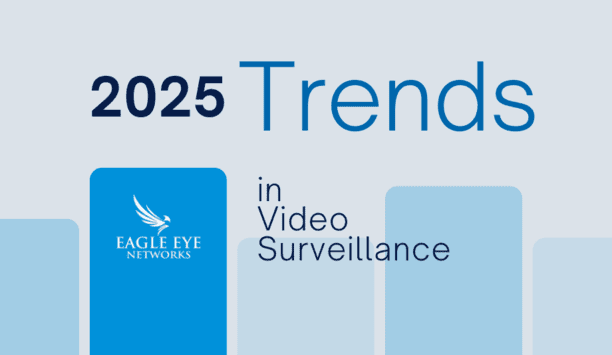
2025 Trends in video surveillance
Download
Maximising security and performance
Download
Palm vein recognition
Download
Physical access control
Download
The key to unlocking K12 school safety grants
Download
Selecting the right network video recorder (NVR) for any vertical market
Download
Cybersecurity for enterprise: The essential guide to protecting your business
Download
The 2024 state of physical access trend report
Download
The security challenges of data centers
Download
Security practices for hotels
Download
Access control system planning phase 2
Download
Honeywell GARD USB threat report 2024
Download
The role of artificial intelligence to transform video imaging
Download
Using artificial intelligence (AI) to automate physical security systems
Download
A modern guide to data loss prevention
Download
2025 Trends in video surveillance
Download
Maximising security and performance
Download
Palm vein recognition
Download
Physical access control
Download
The key to unlocking K12 school safety grants
Download
Selecting the right network video recorder (NVR) for any vertical market
Download


Using artificial intelligence (AI) to automate physical security systems
Download
A modern guide to data loss prevention
Download
7 proven solutions for law enforcement key control and asset management
Download
The truth behind 9 mobile access myths
Download
Access control system planning phase 2
Download






